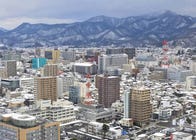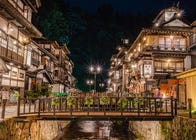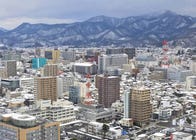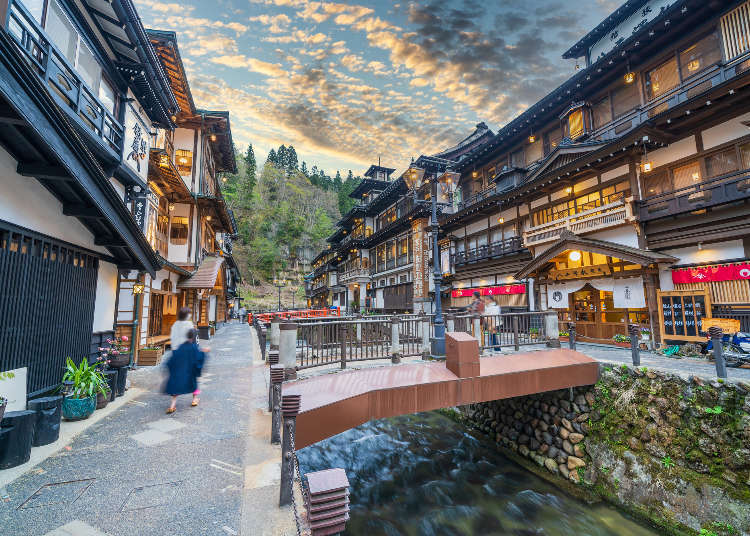
Yamagata Prefecture, located in the northern Japanese region of Tohoku, is a rural and mountainous region renowned for its untouched natural beauty, welcoming local people, and abundant natural hot springs. In fact, Yamagata is the only prefecture in Japan with at least one natural hot spring - known as onsen in Japanese - in every city, town, and village!
(Main image: PIXTA)
Yamagata’s Onsen
Onsen is one of the main draws for tourists in Japan, but it is also a popular pastime for Yamagata locals. Visiting the onsen provides a way to unwind after a long day, to reap the health benefits of the different minerals in the spring water, and to stay in one of the traditional ryokan (Japanese inns) found in onsen towns.
- Public Onsen - Communal baths mainly for day-use that charge a small fee to use.
- Foot Baths - A subset of public onsen; often free and found along the street in onsen towns.
- Hotel/Ryokan Onsen - On-site baths at overnight accommodations in onsen areas, mainly for use by guests and included in overnight plans.
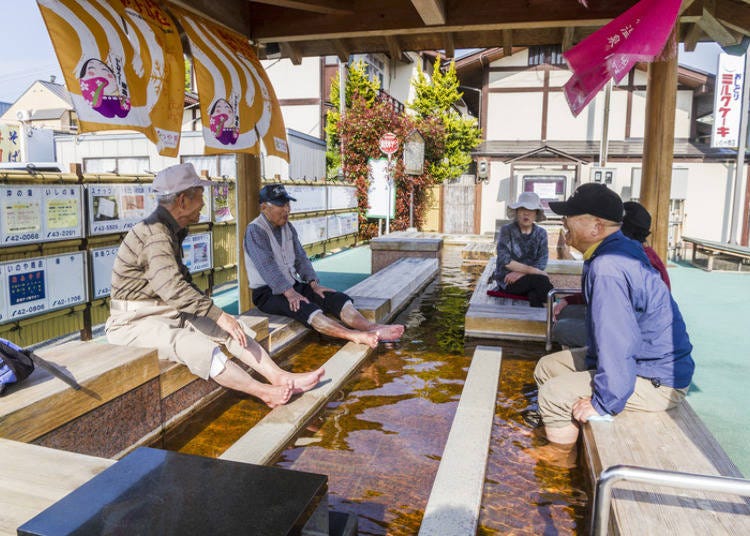
With so many onsen to choose from in Yamagata alone, the decision of where to go can be quite daunting. We’ve put together a list of 5 of the best onsen towns in Yamagata as recommended by Yamagata locals themselves, so you can spend less time choosing where to go and more time relaxing in the healing springs.
Regions of Yamagata
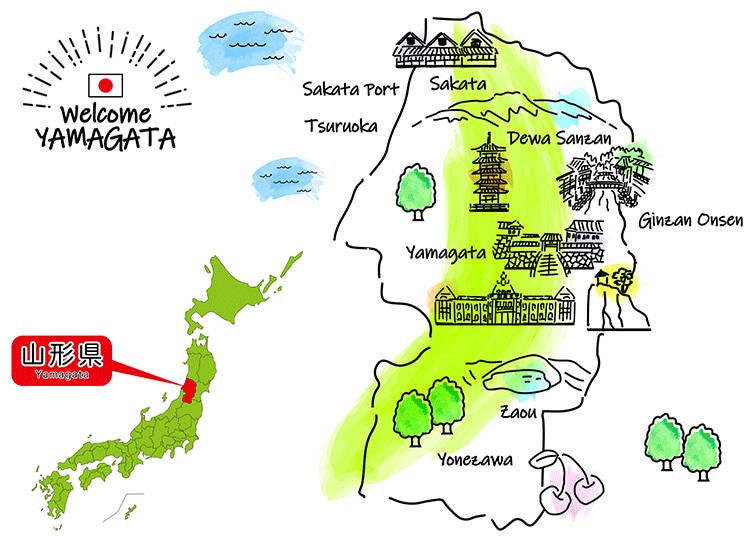
Yamagata can be split into two main areas: the inland “Nairiku” region and the coastal “Shonai” region on the Sea of Japan, between which the culture and even spoken dialect differs greatly.
Nairiku includes Yamagata City, Mount Zao, and the famous Ginzan Onsen, while Shonai includes Sakata and Tsuruoka cities and several renowned coastal onsen such as Atsumi Onsen.
Most of the onsen towns on this list are located in the Nairiku region, but Shonai boasts a change of scenery and world-class seafood - absolutely worth the trip out to the coast.
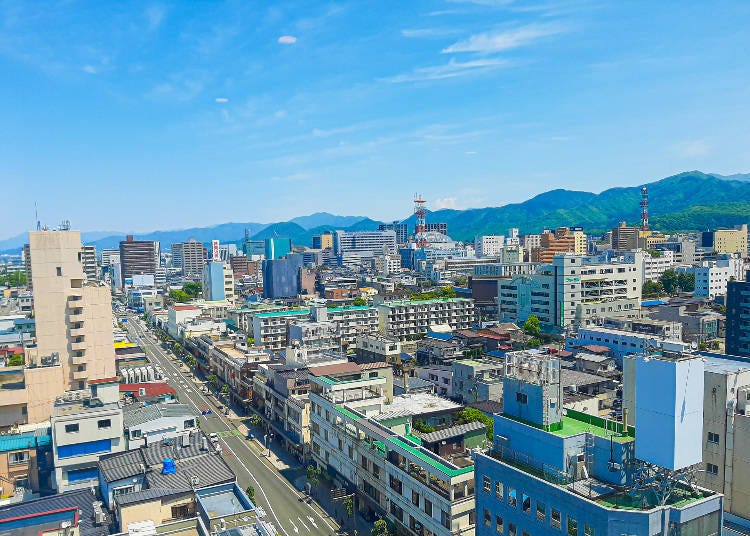
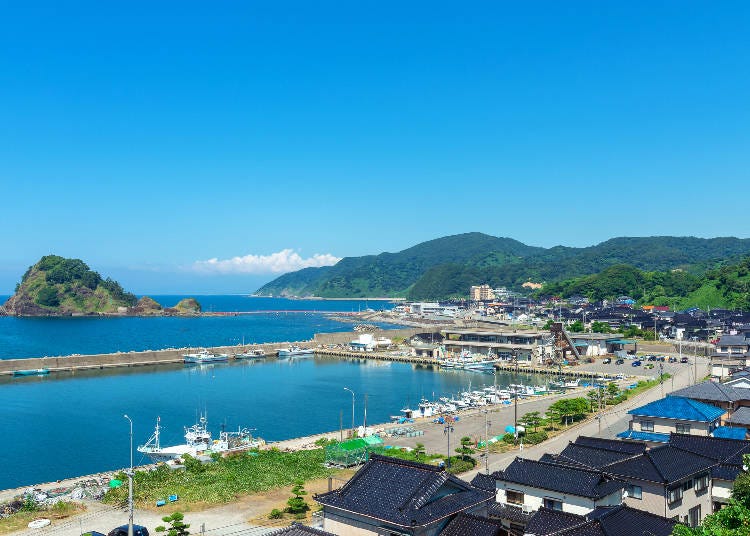
Getting To and Around Yamagata
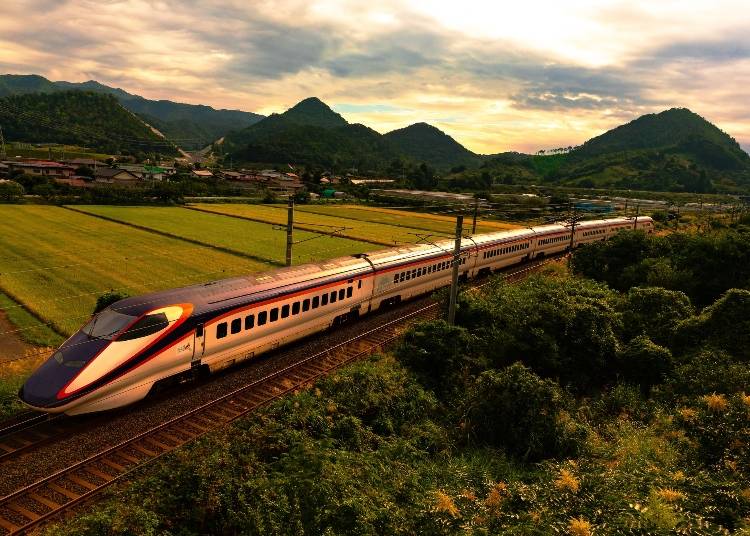
While most areas in Yamagata are reachable by train or bus, many visitors choose to rent a car once they have arrived in the prefecture for ease and speed of access.
- By rail: Access to Yamagata City is easy on the JR Yamagata Shinkansen “Tsubasa” from JR Tokyo Station (2.5-3 hours) covered by the JR East Tohoku Area Pass, the JR East-South Hokkaido Pass, and the Japan Rail Pass. Yamagata Station serves as a hub for many of the other places listed in this article.
- By air: Access to the Shonai region is fastest by air from Tokyo Haneda Airport to Shonai Airport (1 hour), with a bus transfer to Tsuruoka (1 hour) or Sakata (30 minutes).
- By rail (northern Yamagata): By train, take the JR Joetsu Shinkansen from JR Tokyo Station to JR Niigata Station (2 hours) and then a limited express train from Niigata to Tsuruoka or Sakata (2 hours). This route is covered by the Japan Rail Pass and the JR East Nagano Niigata Area Pass.
- Recommended rail pass: JR East Tohoku Area Pass (5 Days)
- See directions from Tokyo Station
5 Must-Visit Onsen Towns in Yamagata
Without further ado, here are our five picks for scenic onsen towns in Yamagata, frequented by local residents and onsen lovers alike.
1. Ginzan Onsen (銀山温泉)
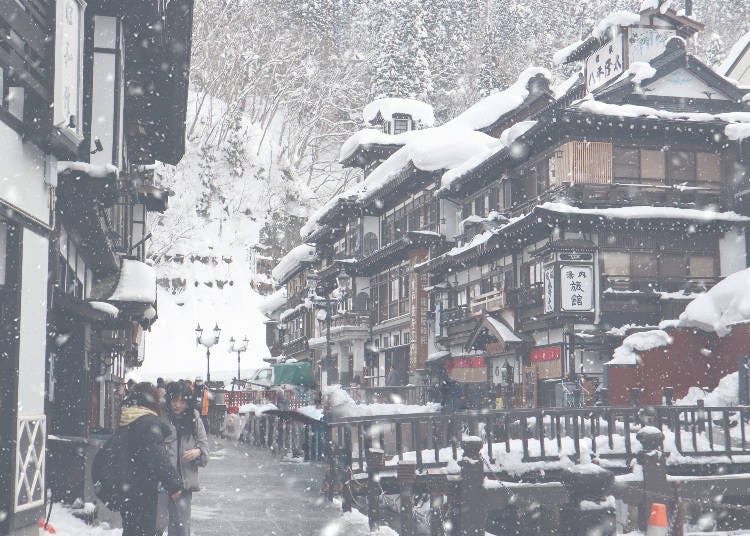
By far, the most well-known hot spring town in Yamagata is Ginzan Onsen. The Chinese characters in the name “Ginzan” (銀山) literally mean “silver mountain”, drawing from the area’s past as a silver mining district before it shifted to the the beloved retro hot spring town it is today.
Workers mining silver on the mountain first discovered the natural hot springs in the area over 500 years ago, and the iconic wooden ryokan (Japanese inns) that line the Ginzan River followed in the 1920s and 1930s.
Said by locals to have inspired the unforgettable bathhouse in Studio Ghibli’s Spirited Away, the photogenic onsen town is best enjoyed at twilight, when the historic inns and gas street lamps twinkle warmly along the riverbank.
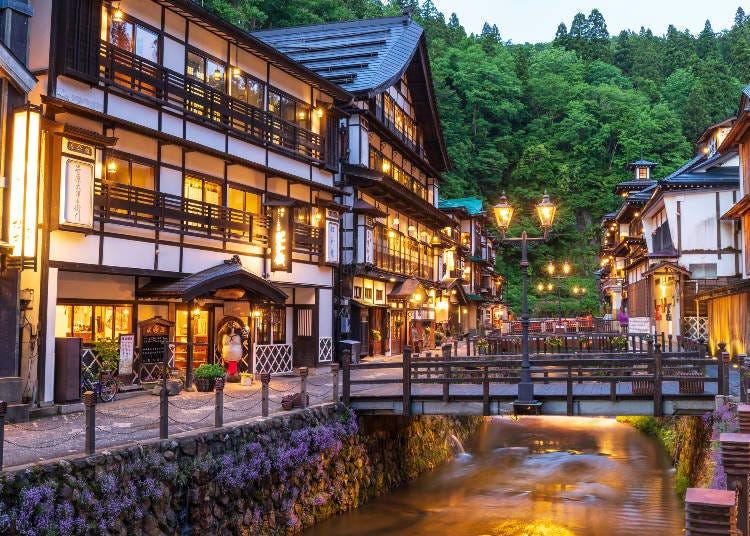
Ginzan Onsen town itself is surprisingly compact, and only takes 5-10 minutes to stroll from one side to the other. Plan to either arrive in the afternoon to evening and spend the night at one of the traditional inns, or spend an hour or two at one of the day-use baths, as there are not many activities or restaurants for day-use guests in the immediate area.
If you are going to splurge on one luxury ryokan experience in Japan, Ginzan Onsen is the place to do so. The inns are high-end and few in number, so we recommend booking at least a few months in advance if you plan to stay the night. The winter season is especially difficult to book, as the otherworldly snowy landscape attracts countless visitors from across Japan and overseas.
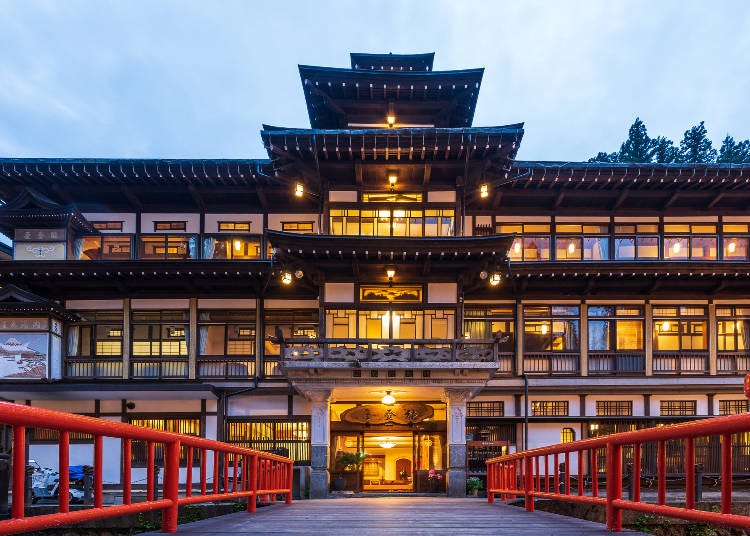
How to Get to Ginzan Onsen Town
Car: 1-1.5 hours to drive from Yamagata City, depending on snow levels.
Rail: From JR Tokyo Station, take the JR Yamagata Shinkansen “Tsubasa” to JR Oishida Station (3-3.5 hours), covered under the JR East Tohoku Area Pass, the JR East-South Hokkaido Pass, and the Japan Rail Pass. From JR Oishida Station, take the Hanagasa Bus straight to Ginzan Onsen (40 minutes).
The bus operates only five times a day, so please be sure to check the timetable in advance to plan your trip accordingly.
The following inns provide a complimentary pick-up and drop-off service from JR Oishida Station for overnight guests (reservation required): Ginzan-so, Kosekiya Bekkan, Waterfall and Soba Takimi-kan, Ryokan Nagasawa Heihachi, Kozankaku.
Public Onsen in Ginzan Onsen Town
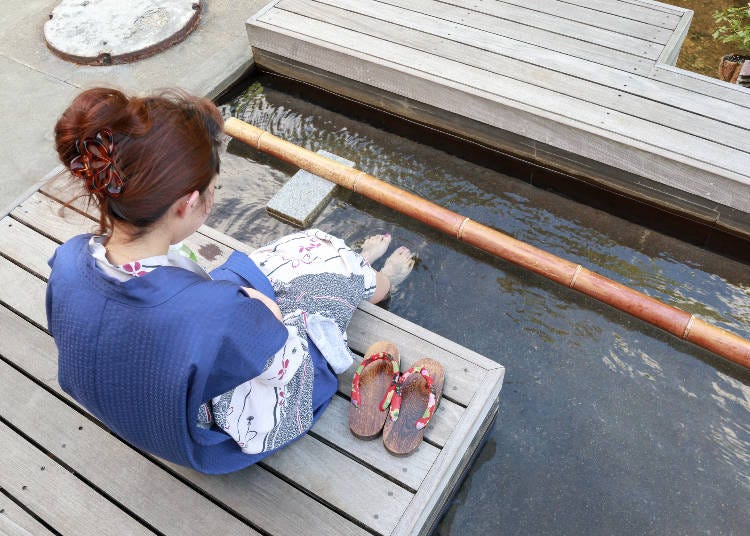
Warashiyu Foot Bath (和楽足湯)
Just a five-minute walk from the Ginzan Onsen bus stop is a free foot bath known as “Warashiyu”, the perfect place to sit down for a moment and rest weary feet. Towels are not provided, so it is recommended to bring one along.
-
Warashiyu Foot Bath和楽足湯
- Address Ginzanshinhata, Obanazawa, Yamagata 999-4333
・Phone: 0237-28-3933 (Ginzan Onsen Tourist Information Center)
・Open: 24-hours
・Price: Free
・Closed: None
Public Bath Shirogane-yu (共同浴場しろがね湯)
For a more immersive experience, head to Public Bath Shirogane-yu for a full-body soak. Shampoo and body soap are provided, but towels are not, so it is recommended to bring your own.
-
Public Bath Shirogane-yu銀山温泉 共同浴場 しろがね湯
- Address 433, Ginzanshinhata, Obanazawa, Yamagata 999-4333
・Phone: 0237-28-3933 (Ginzan Onsen Tourist Information Center)
・Open: 8 AM - 5 PM (last entrance 4:30 PM)
・Price: Adults 500 yen, children 200 yen
・Closed: Irregular holidays
Where to Stay in Ginzan Onsen Town
Notoya Ryokan (能登屋旅館)
Japanese-style rooms. Built like something out of a Studio Ghibli film, this inn is one of the most famous and easily recognizable in the Ginzan Onsen town area. Indoor, outdoor, and private onsen available.
-
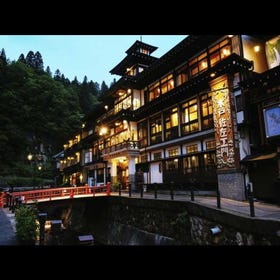
-
Address
446 Ginzan Shinhata, Obanazawa City, Yamagata Prefecture, 999-4333
View Map -
Nearest Station
Oishida Station (Ou Line / Yamagata Shinkansen)
40 minutes by bus
- Phone Number 0237-28-2327
-
Address
446 Ginzan Shinhata, Obanazawa City, Yamagata Prefecture, 999-4333
Ginzan-so (銀山荘)
Japanese-style rooms with a scenic view of the mountains. Indoor and outdoor onsen available. Several guest rooms also feature attached private open-air baths.
-
Ginzan-so銀山荘
- Address 85 Ginzanshinhata, Obanazawa, Yamagata 999-4333
-
Nearest Station
JR Oishida Station (40 minutes by public bus or free hotel shuttle bus - reservation required in advance).
- Phone Number 0237-28-2322
Ryokan Fujiya (旅館 藤屋)
Recently renovated Japanese-style rooms. This ryokan has five private onsen. While the semi-outdoor bath requires advance booking, the other indoor baths are free to use when unoccupied.
-
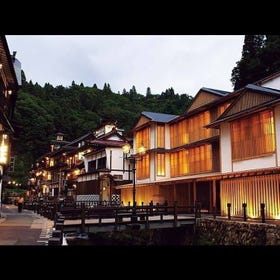
-
Address
443, Ginzanshinhata, Obanazawa-shi, Yamagata, 999-4333
View Map -
Nearest Station
Oishida Station (Ou Line / Yamagata Shinkansen)
40 minutes by bus
- Phone Number 0237-28-2141
Vacancy search, reservation
-
Please enquire directly about rates.
Check with our partner site as the latest rates, rate details, and guest room requirements may vary.
-
Address
443, Ginzanshinhata, Obanazawa-shi, Yamagata, 999-4333
2. Zao Onsen (蔵王温泉)
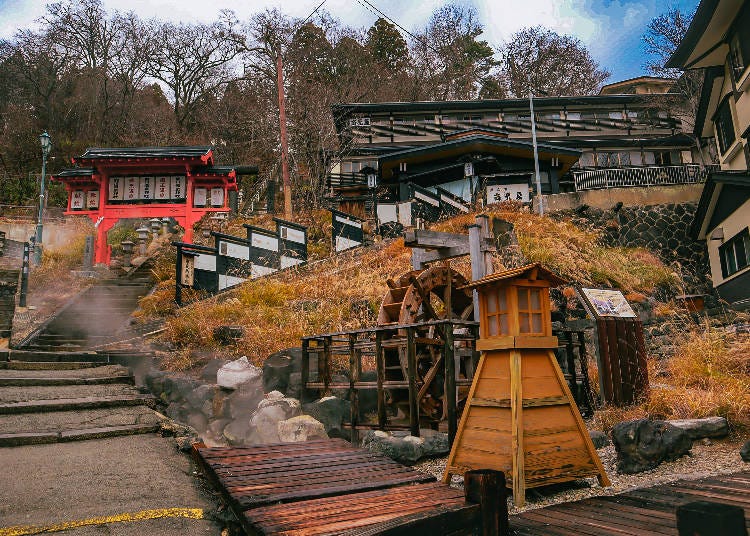
If Ginzan Onsen is the most famous onsen town in Yamagata, then Zao Onsen is a very close second - and a much more accessible option! A hugely popular ski resort in the winter, Zao Onsen town is one of the oldest hot spring areas in all of Japan, said to have been discovered as early as 110 AD. The story goes that a wounded warrior named Kibi no Takayu bathed in the hot springs and reportedly recovered in just a few days, and the healing waters of Zao Onsen became the stuff of legend. The milky, sulfuric water boasts some of the highest acidity in Japan and is praised for its various therapeutic properties, such as promoting blood circulation, wound healing, and skin-beautifying effects.
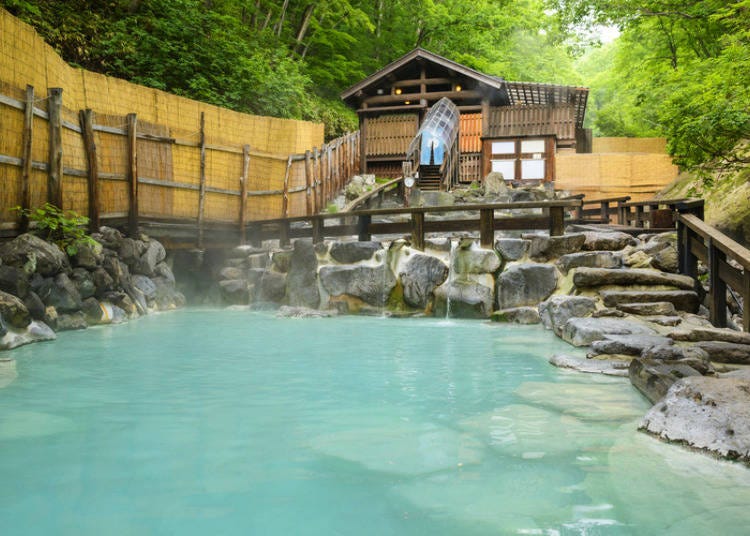
With 5 groups of sources branching off into 47 different springs, there are plenty of indoor, outdoor, and even private baths to choose from in the area. During the spring, summer, and autumn, the highlight of the area is the Zao Onsen Dai Rotenburo, a large outdoor bath surrounded by tranquil mountain forests. The onsen town comes alive in the winter, however, when the landscape transforms into a canvas of sparkling white and winter sports lovers flock from all over the country - and the world - to enjoy top-class slopes at one of the largest ski resorts in Japan.
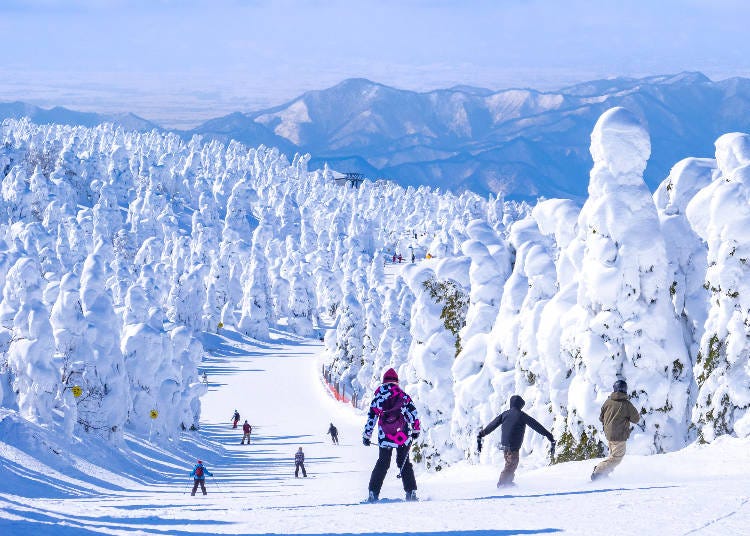
If skiing or snowboarding isn’t your thing though, don’t worry - you can still enjoy the unique scenery! Mount Zao is one of the only locations in Japan where you can see a unique phenomenon called juhyo - affectionately known as “snow monsters” - gigantic ice-encased trees.
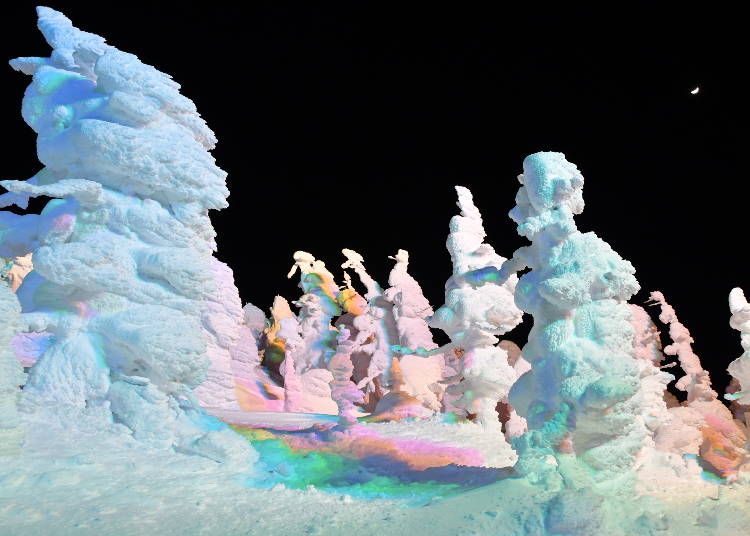
While a day trip from Yamagata City is certainly possible, it is well worth it to stay at one of the many top-quality inns in the Zao Onsen area, especially if you’re planning to hit the slopes. Nothing is better than relaxing in the healing springs and enjoying local specialties like Zao wagyu beef or Yamagata sake at the end of a long day.
We also recommend visiting Yamagata Sake Museum and Bar Tsumami, a 4-minute walk from the Zao Onsen Bus Terminal, where you can purchase local sake from each of Yamagata’s 49 breweries, partake in sake tasting starting at 300 yen per glass, and enjoy lunch or dinner featuring mouth-watering Yamagata cuisine.
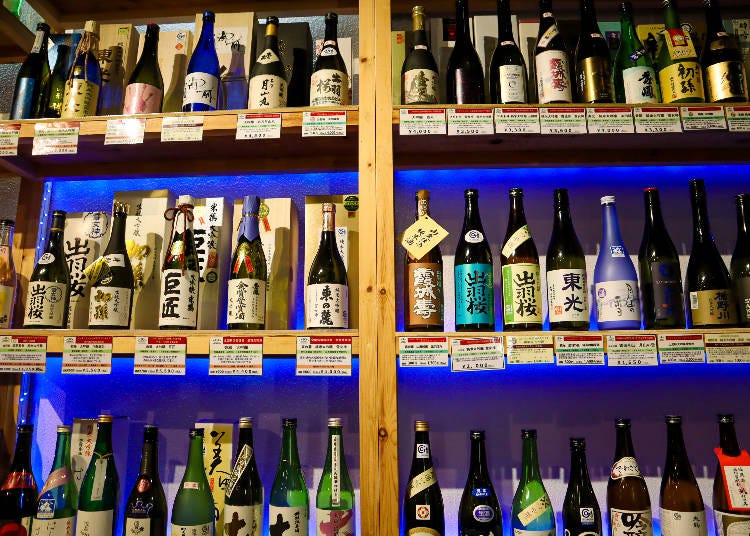
-
Yamagata Sake Museum and Yukemuri Bar Tsumami山形酒のミュージアム&湯けむり屋台つまみ
- Address 951, Zao Onsen, Yamagata 990-2301
-
Nearest Station
Zao Onsen Bus Terminal (4-minute walk)
- Phone Number 023-694-9052
・Open: 11 AM - 10 PM (Bar Tsumami starts from 5 PM)
・Closed: Wednesday
How to Get to Zao Onsen Town
Car: About 30-40 minutes from Yamagata City. There are several paid parking lots and most inns have their own parking lot for overnight guests.
Public transportation: From Yamagata Station, take the Yamako Bus on the Yamagata - Zao Line to Zao Onsen Bus Terminal, the final stop (37 minutes). There are 13-14 buses leaving Yamagata Station per day.
Public Onsen in Zao Onsen Town
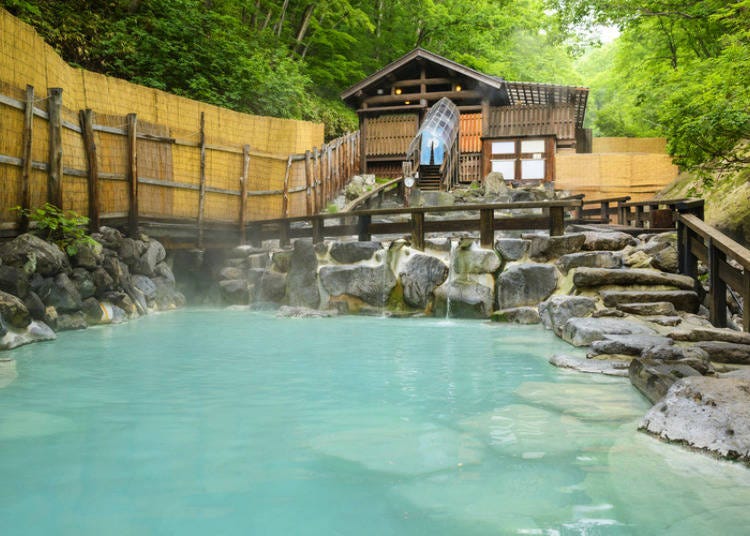
Zao Onsen Dai Rotenburo (Large Open-Air Bath) (蔵王温泉大露天風呂)
Open only from late spring to late autumn, Zao Onsen Dai Rotenburo is one of the symbols of Zao Onsen and cannot be missed in the warmer months. With its milky turquoise waters and attractive location in the lush, serene forests of Mount Zao, this outdoor spring is beloved by visitors and locals alike.
The Dai Rotenburo has a parking lot, but is also reachable by foot from Zao Onsen Terminal. Towels are not provided, so we recommend that you bring your own or purchase one on site.
-
Zao Onsen Dai Rotenburo蔵王温泉大露天風呂
- Address 853-3 Zao Onsen, Yamagata 990-2301
-
Nearest Station
Zao Onsen Bus Terminal (20-minute walk)
- Phone Number 023-694-9417
・Hours: 9:30 AM - 5 PM (final entrance 4:30 PM) on weekdays, 9:30 AM - 6 PM (final entrance 5:30 PM on weekends and holidays)
・Price: Adults 700 yen, children 400 yen
・Closed: Winter Season (Late November-Late April)
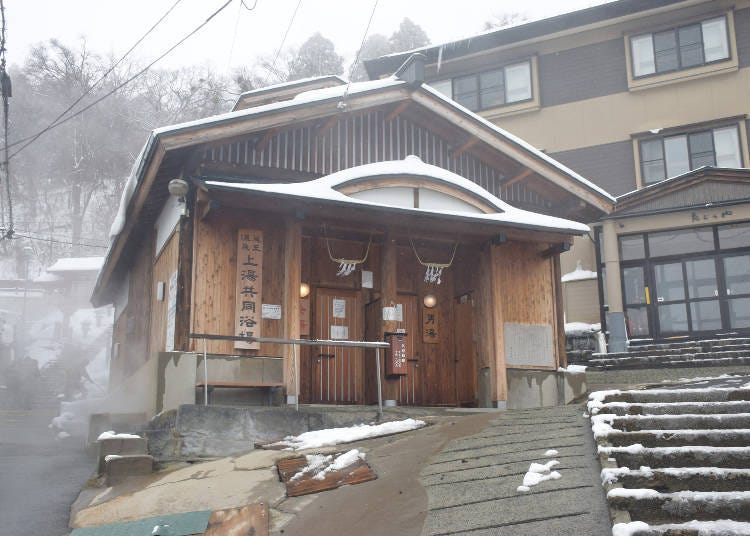
There are three public baths less than a 10-minute walk from the bus station and within 100 meters of each other in the onsen town - perfect for onsen-hopping! These include Kamiyu Public Bath, Shimoyu Public Bath, and Kawahara Public Bath, but the closest to the ski area is Kamiyu. The public baths are run on the honor system, and there is a box at the entrance to put coins in before entering. Towels are not provided, so we recommend bringing your own.
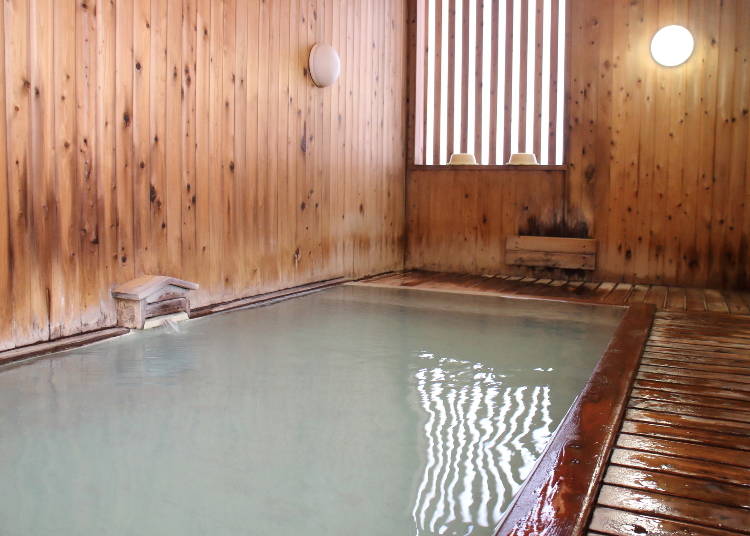
-
Kamiyu Public Bath上湯共同浴場
- Address 45-1, Zao Onsen, Yamagata 990-2301
-
Nearest Station
Zao Onsen Bus Terminal (6-minute walk)
- Phone Number 023-694-9328
・Open: 6 AM - 10 PM
・Price: Adults 200 yen, children 100 yen
・Closed: None
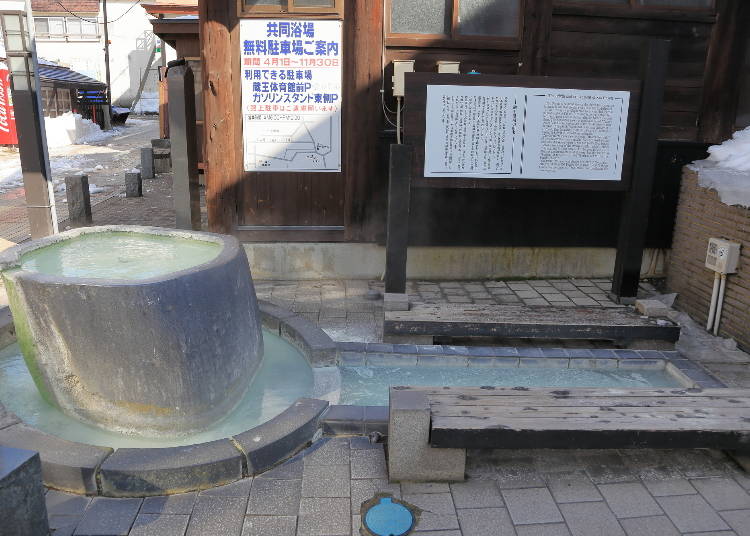
Shimoyu Foot Bath (下湯の足湯)
One of three free foot baths in Zao Onsen town, Shimoyu Foot Bath is directly outside Shimoyu Public Bath, a 3-minute walk from the bus terminal, making it a great option if you’re waiting for a friend who’s still in the public bath. Towels are not provided, so we recommend bringing your own.
-
Shimoyu Foot Bath下湯の足湯
- Address 30-2, Zao Onsen, Yamagata 990-2301
-
Nearest Station
Zao Onsen Bus Terminal (3-minute walk)
- Phone Number 023-694-9328
・Open: 6 AM - 10 PM
・Price: Free
・Closed: None
Where to Stay in Zao Onsen Town
Zao Kokusai Hotel (蔵王国際ホテル)
Spacious, modern Japanese-stye and Western-style rooms. Free round-trip shuttle service from Yamagata Station. Indoor and outdoor onsen available, as well as several private onsen that can be rented for a fee (2,200 yen - 3,300 yen/45 minutes).
-
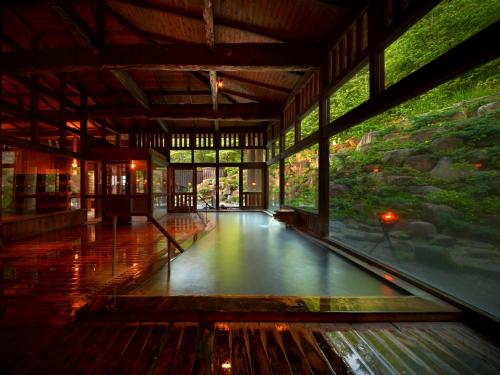
-
Address
Zao Onsen 933, Zao Onsen, Yamagata, 990-2301
View Map -
Nearest Station
Chuokogen Station (Zao Sky Cable)
48 minutes on foot
Vacancy search, reservation
-
from 25,380JPY 1room, 2adults
Check with our partner site as the latest rates, rate details, and guest room requirements may vary.
-
Address
Zao Onsen 933, Zao Onsen, Yamagata, 990-2301
Wakamatsuya (蔵王・和歌の宿 わかまつや)
Japanese-style and Western-style rooms. Conveniently located directly next to - and run by the same management as - Yamagata Sake Museum & Bar Tsumami, Wakamatsuya offers a free shuttle to and from Zao Onsen Bus Terminal, the ski slope cable car, and Zao Onsen Dai Rotenburo. Indoor and outdoor onsen available, as well as a free 24-hour private onsen for overnight guests.
-
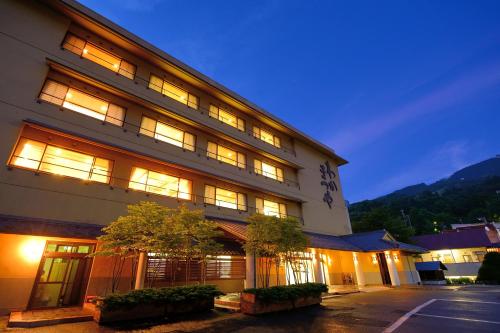
-
Address
Zao Onsen 951-1, Zao Onsen, Yamagata, 990-2301
View Map -
Nearest Station
Chuokogen Station (Zao Sky Cable)
37 minutes on foot
Vacancy search, reservation
-
from 39,900JPY 1room, 2adults
Check with our partner site as the latest rates, rate details, and guest room requirements may vary.
-
Address
Zao Onsen 951-1, Zao Onsen, Yamagata, 990-2301
Takasagoya Ryokan (高砂屋旅館)
Ultra-local, family-run inn with quaint Japanese-style rooms. Takasagoya is especially known for its out-of-this-world meals featuring unique local delicacies. While the inn doesn’t have its own natural onsen, it has an indoor artificial mineral hot spring, and guests are given a free entrance ticket to any of the three public baths (Kamiyu, Shimoyu, or Kawahara) in the area.
-
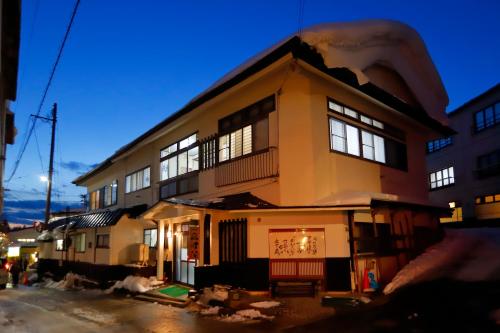
-
Address
Zaoonsen 23, Zao Onsen, Yamagata, 990-2301
View Map -
Nearest Station
Chuokogen Station (Zao Sky Cable)
38 minutes on foot
Vacancy search, reservation
-
from 17,600JPY 1room, 2adults
Check with our partner site as the latest rates, rate details, and guest room requirements may vary.
-
Address
Zaoonsen 23, Zao Onsen, Yamagata, 990-2301
3. Hijiori Onsen (肘折温泉)
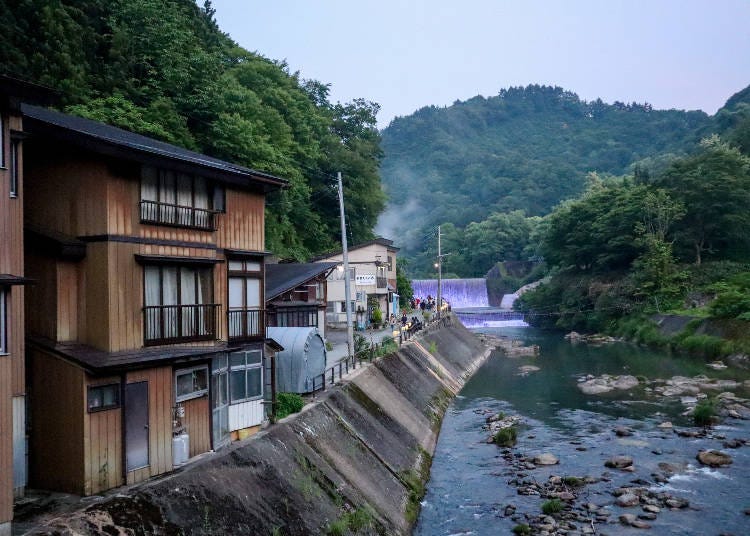
Tucked away in the mountains of northern Yamagata, Hijiori Onsen town is a true hidden gem - very rarely visited by travelers from outside Japan thanks to its remote location. Most residents of Hijiori are descendants of the original Edo period founders, and stepping into this historic town is like taking a journey back in time.
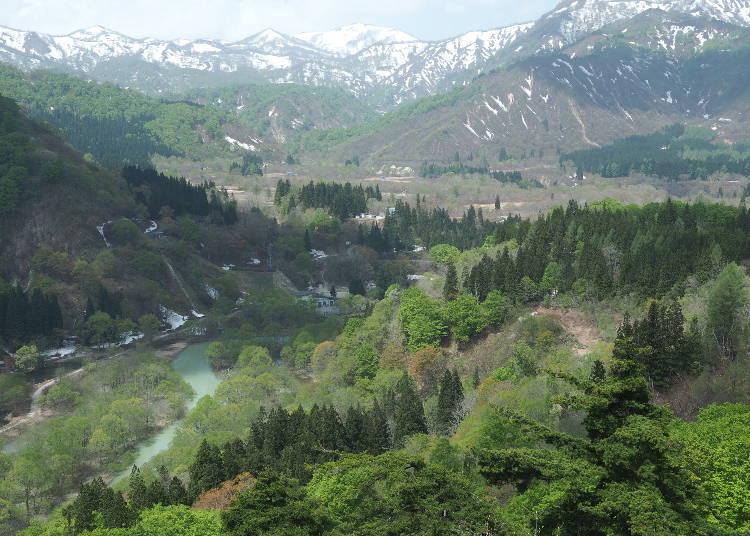
Sitting in a volcanic caldera, this hot spring wonderland was discovered in 807 and boasts over 1200 years of history as a healing retreat. Some 300 years ago, local farmers banded together to open onsen inns in the town, and the over 20 resorts are all family-run. With not a single chain hotel in sight, it’s hard to get any more authentically local than Hijiori.
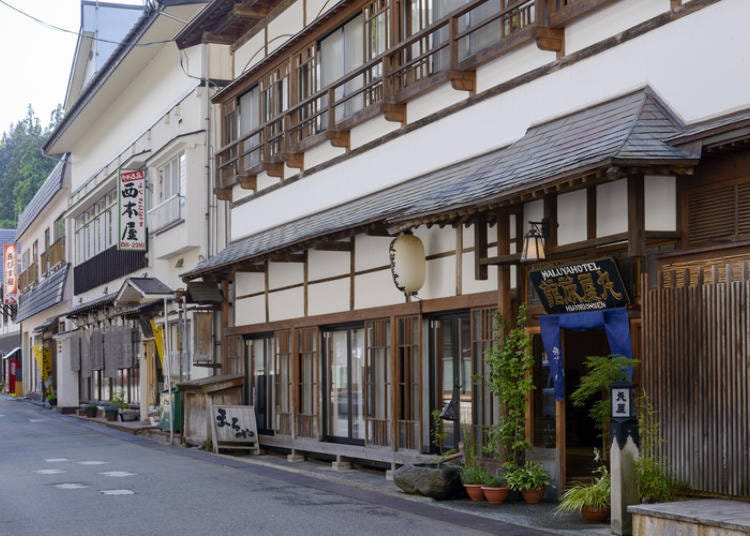
The name “Hijiori” comes from the Japanese words “hiji” (elbow) and “oru” (to bend or break) - legend has it that an old monk who broke his elbow climbing the mountain once bathed in the springs and was immediately healed. The word spread far and wide and soon travelers began flocking to soak in the famous waters, its reputation as a place of rejuvenation continuing to this day.
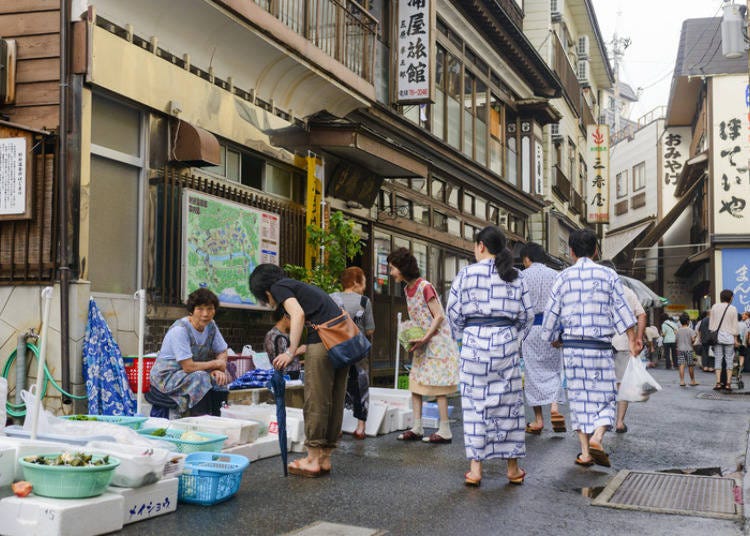
The town is worth an overnight visit as it takes a bit of time to reach and each of the onsen resorts offers a healthy dose of warm Yamagata hospitality. We especially recommend visiting the morning market, which runs from 5:30 AM - 7:30 AM daily on the main street during the spring to autumn months. Local farmers and artisans gather to sell their fresh produce and handmade goods, an experience worth waking up early for.
How to Get to Hijiori Onsen Town
While remote, Hijiori Onsen is accessible by car and public transportation.
Car: By car, the drive from Yamagata City to Hijiori Onsen is approximately 1.5 hours, depending on snow levels
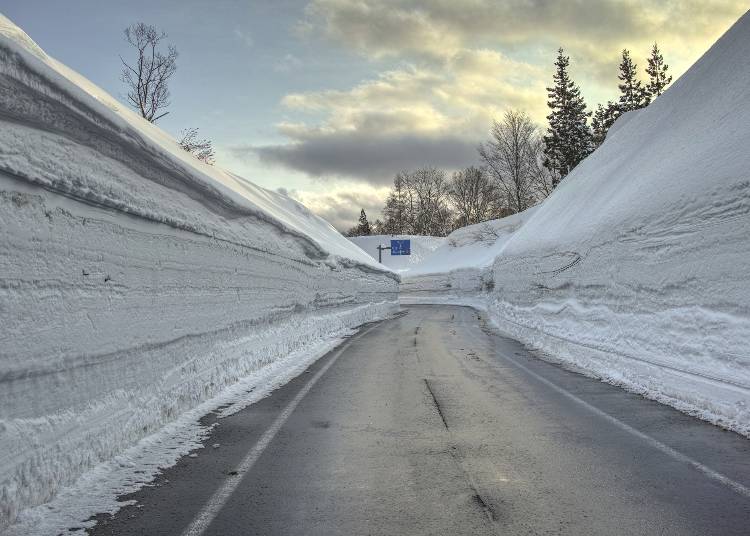
Public transportation: From Tokyo, it takes 4.5-5 hours to reach Hijiori Onsen. Board the JR Yamagata Shinkansen “Tsubasa” from JR Tokyo Station to JR Shinjo Station (3.5 hours), covered by the JR East Tohoku Area Pass, the JR East-South Hokkaido Pass, and the Japan Rail Pass. From Shinjo Station, there is a direct bus to Hijiori Onsen Machiai-jo Bus Terminal on the Hijiori Yukemuri Line (55 minutes). There are 6-7 buses departing each way per day.
Public Onsen in Hijiori Onsen Town
Caldera-Onsenkan (黄金温泉 カルデラ温泉館)
This public onsen requires a 20-25-minute walk along the scenic Dozan River from the main onsen town, but it is well worth the visit. The springs are sourced from nearby Kogane Onsen, and feature naturally carbonated hot and cold indoor and outdoor baths. The highlight, however, is the fact that the cold onsen water is drinkable straight from the source! Said to cure a variety of internal maladies, this onsen is popular among locals. Towels are not provided, so please bring one along.
-
Caldera-Onsenkan黄金温泉 カルデラ温泉館
- Address 2127-79 Minamiyama, Okura, Mogami, Yamagata 996-0301
-
Nearest Station
Hijiori Onsen Machiai-jo Bus Terminal (25-minute walk)
- Phone Number 0233-76-2622
・Price: Adults 550 yen, Children 300 yen
・Open: May-October 10 AM - 5 PM (last entrance 4:30 PM), November - April 10 AM - 4 PM (last entrance 3:30 PM)
・Closed: May-October every Wednesday, November - April every Wednesday/Thursday
Where to Stay in Hijiori Onsen Town
Matsuya Inn Hijiori Onsen (肘折温泉 手掘り洞窟温泉 松屋)
Our #1 pick for Hijiori Onsen. Japanese-style rooms. One indoor onsen each for men and women, but the highlight of Matsuya is the incredible cave onsen. Located at the end of a hand-dug 40-meter-long tunnel, the cave onsen is available for private reservation by guests (550 yen/30 minutes).
-
Matsuya Inn Hijiori Onsen肘折温泉 手掘り洞窟温泉 松屋
- Address 499 Minamiyama, Okura, Mogami, Yamagata 996-0310
-
Nearest Station
Hijiori Onsen Machiai-jo Bus Terminal (2-minute walk)
- Phone Number 0233-76-2041
Vacancy search, reservation
-
Please enquire directly about rates.
Check with our partner site as the latest rates, rate details, and guest room requirements may vary.
Maruya Ryokan Hijiori Onsen (肘折温泉 丸屋旅館)
Quiet inn with Japanese-style rooms. Indoor and outdoor baths built from hinoki cedar and mulberry wood, as well as a private bath.
-
Maruya Ryokan Hijiori Onsen肘折温泉 丸屋旅館
- Address 519 Minamiyama, Okura, Mogami, Yamagata 996-0201
-
Nearest Station
Hijiori Onsen Machiai-jo Bus Terminal (1-minute walk)
- Phone Number 0233-76-2021
Matsui Ryokan Hijiori Onsen (肘折温泉 松井旅館)
Cozy Japanese-style rooms. The entrance is lined with photos from the inn’s rich history. Indoor and outdoor baths, as well as a private bath, are available.
-
Matsui Ryokan Hijiori Onsen肘折温泉 松井旅館
- Address 491 Minamiyama, Okura, Mogami, Yamagata 996-0201
-
Nearest Station
Hijiori Onsen Machiai-jo Bus Terminal (4-minute walk)
- Phone Number 0233-76-2016
Vacancy search, reservation
-
Please enquire directly about rates.
Check with our partner site as the latest rates, rate details, and guest room requirements may vary.
4. Kaminoyama Onsen (かみのやま温泉)
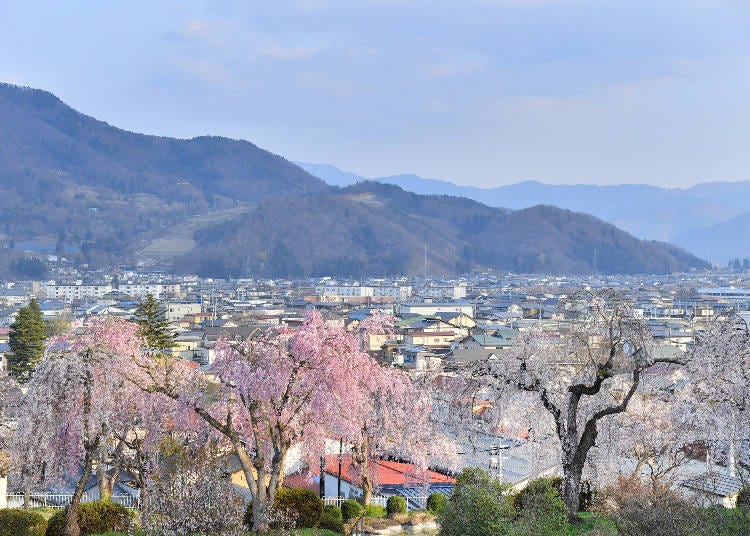
Kaminoyama Onsen, easily accessible by bullet train from Tokyo, is a charming onsen town in southern Yamagata that was discovered about 560 years ago. Home to Yamagata's only standing castle (a reconstruction completed in 1982), Kaminoyama has been renowned for centuries as a bustling castle town and a popular stop for tired travelers walking the historic Ushu Highway.
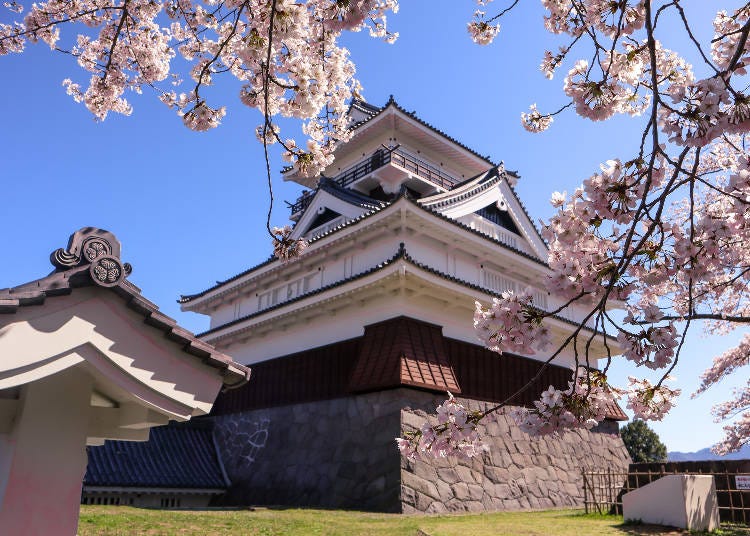
The history of the onsen town began in 1458, when a traveling monk named Gesshu witnessed an injured crane soothing its wounded leg in a pool. Realizing that the waters were coming from a natural onsen, he worked together with locals to develop the area, and the springs quickly became renowned for their relaxation and healing powers.
When you’re not busy enjoying the onsen or the castle, we recommend taking a stroll along Bukeyashiki Street behind Kaminoyama Castle, lined with four historic samurai residences. Each built over 300 years ago, the thatched roofs and old storehouses stand as a testament to a time gone by. Of the four properties, the Former Miwa Residence and the Former Sogabe Residence are open to the public.
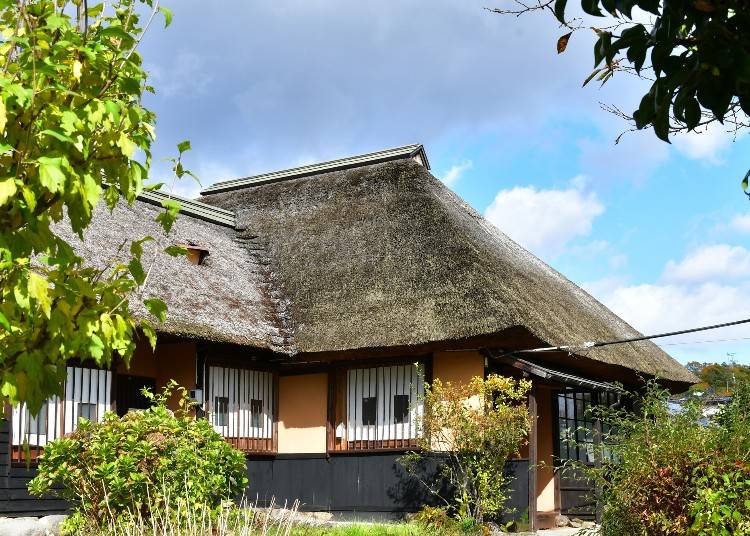
With several foot baths, day-use baths, and hot spring inns, Kaminoyama Onsen town is the perfect day trip from Yamagata City. If you’re visiting from Tokyo or farther, we recommend spending the night to fully enjoy the onsen town experience without time constraints.
How to Get to Kaminoyama Onsen Town
Car: For visitors coming by car, the drive is only 20-25 minutes from Yamagata City. Most inns have a parking lot for use by overnight and day-use guests, and Kaminoyama Castle features a free parking lot for castle visitors.
Public transportation: If coming by public transportation from Yamagata City, JR Kaminoyama Onsen Station is just a 12-minute train ride on the Ou Line from JR Yamagata Station.
Access is simple from Tokyo as well. Take the JR Yamagata Shinkansen “Tsubasa” from JR Tokyo Station to JR Kaminoyama Onsen Station (2.5 hours), covered by the JR East Tohoku Area Pass, the JR East-South Hokkaido Pass, and the Japan Rail Pass.
Public Onsen in Kaminoyama Onsen Town
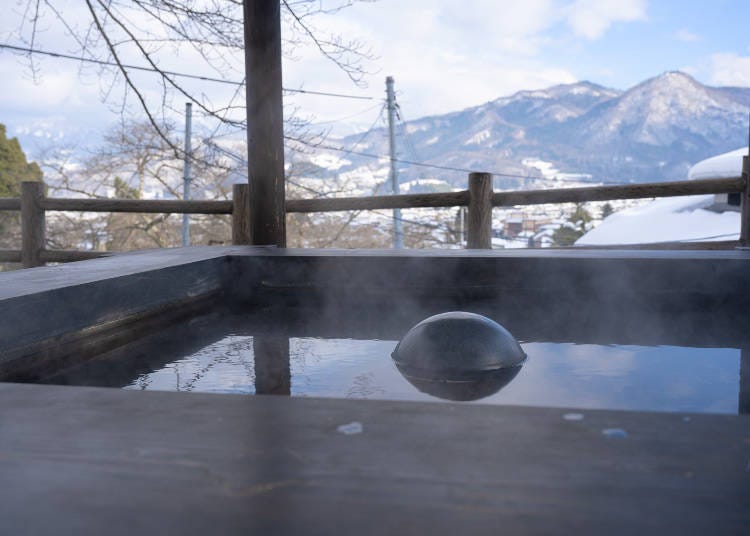
Kaminoyama Castle Local Museum/Foot Bath (上山城郷土資料館・上山城の足湯)
One of five foot baths in Kaminoyama Onsen town, this free foot bath is conveniently located outside the entrance of Kaminoyama Castle. High upon the hill of the castle park, you will be treated to sweeping views of the Zao mountain range on a clear day. Towels are not provided, so we recommend bringing your own. While the bath is free, the castle museum charges a small fee to look around inside.
-
Kaminoyama Castle Local Museum/Foot Bath上山城郷土資料館・上山城の足湯
- Address 3-7 Motojonai, Kaminoyama City, Yamagata Prefecture
- Phone Number 023-673-3660
・Open: Foot bath - 6 AM - 10 PM, Museum - 9 AM - 4:45 PM
・Price: Foot bath - Free, Museum - Adults 410 yen, high school and university students 360 yen, elementary and jr. high school students 50 yen
・Closed: Foot bath - Open daily, Museum - 2nd Thursday in odd-numbered months, Monday - Friday in the first week of September, December 29 - 31
Shincho Tsuru-no-Yu Public Bath (新丁共同浴場「鶴の湯」)
With one small indoor bath for men and another for women, as well as a free resting space on the second floor, this quaint public bath is beloved by locals. Towels are not provided, so we recommend bringing your own. Shampoo is available for purchase at 100 yen/person.
-
Shincho Tsuru-no-Yu Public Bath新丁共同浴場「鶴の湯」
- Address 7-54 Shincho, Kaminoyama, Yamagata 999-3152
- Phone Number 090-9747-4800
・Open: 6 AM - 10 PM (March-October), 6:30 AM - 9:30 PM (November - February)
・Price: Adults 150 yen, children 100 yen
・Closed: Every Wednesday
Where to Stay in Kaminoyama Onsen Town
Tsukioka Hotel (月岡ホテル)
Japanese-style and Western-style rooms. Several spacious outdoor and indoor onsen available, as well as a sauna. It is also open for day use for a small fee (1000 yen for adults and 500 yen for children).
-
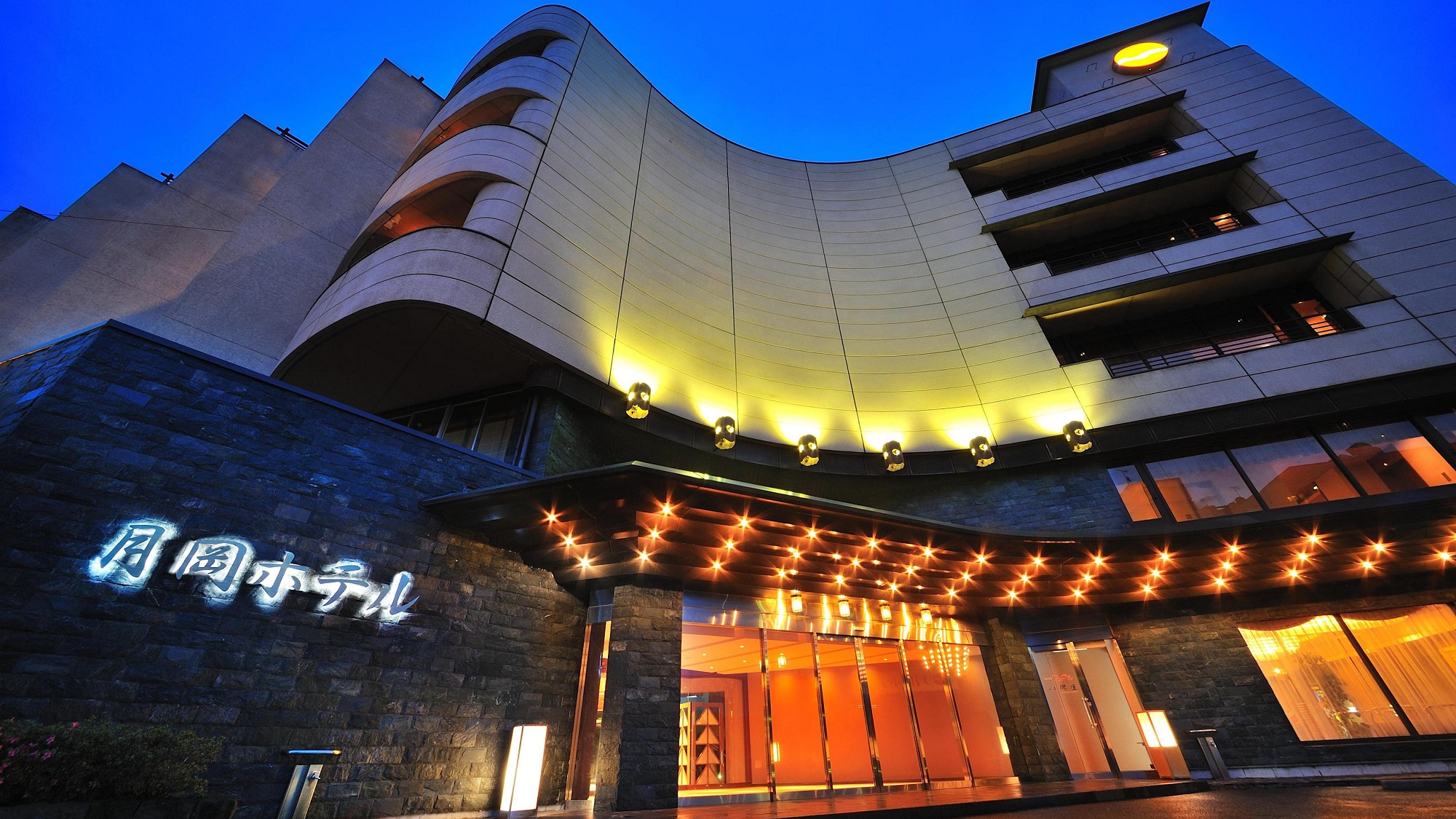
-
Address
1-33 Shinyu, Kaminoyama-shi, Yamagata, 999-3141
View Map -
Nearest Station
Kaminoyamaonsen Station (Yamagata Shinkansen)
Vacancy search, reservation
-
from 27,830JPY 1room, 2adults
Check with our partner site as the latest rates, rate details, and guest room requirements may vary.
-
Address
1-33 Shinyu, Kaminoyama-shi, Yamagata, 999-3141
Arimakan (展望露天の湯 有馬館)
Japanese-style and Western-style rooms. Arimakan features three different private baths (first use free) for use by overnight guests, indoor and outdoor baths, and a hot stone spa.
-
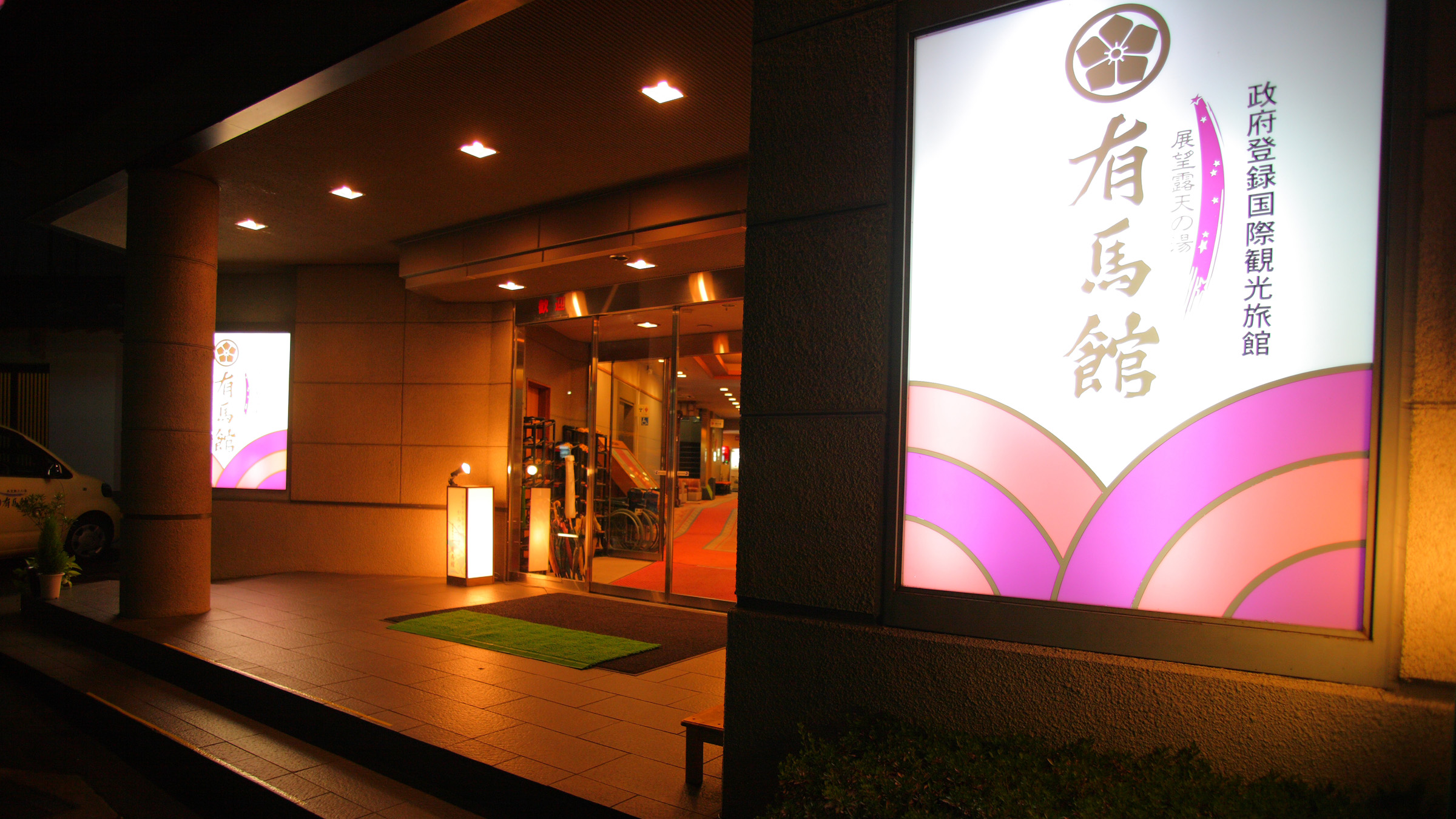
-
Address
6-5 Shinyu, Kaminoyama-shi, Yamagata, 999-3141
View Map -
Nearest Station
Kaminoyamaonsen Station (Yamagata Shinkansen)
Vacancy search, reservation
-
from 22,000JPY 1room, 2adults
Check with our partner site as the latest rates, rate details, and guest room requirements may vary.
-
Address
6-5 Shinyu, Kaminoyama-shi, Yamagata, 999-3141
Hanaakari no Yado Tsuki no Ike (花明りの宿 月の池)
Luxurious Japanese-style and Western-style rooms. Indoor and outdoor onsen available, and three of the guestrooms have their own private open-air baths, filled with fresh roses throughout the year.
-
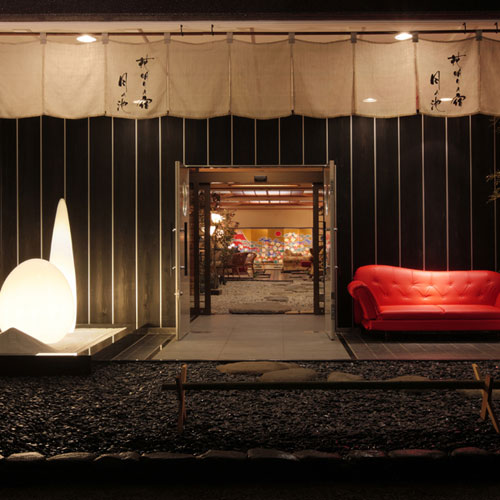
-
Address
3-10 Yumachi, Kaminoyama-shi, Yamagata, 999-3156
View Map -
Nearest Station
Kaminoyamaonsen Station (Yamagata Shinkansen)
Vacancy search, reservation
-
Please enquire directly about rates.
Check with our partner site as the latest rates, rate details, and guest room requirements may vary.
-
Address
3-10 Yumachi, Kaminoyama-shi, Yamagata, 999-3156
5. Atsumi Onsen (あつみ温泉)
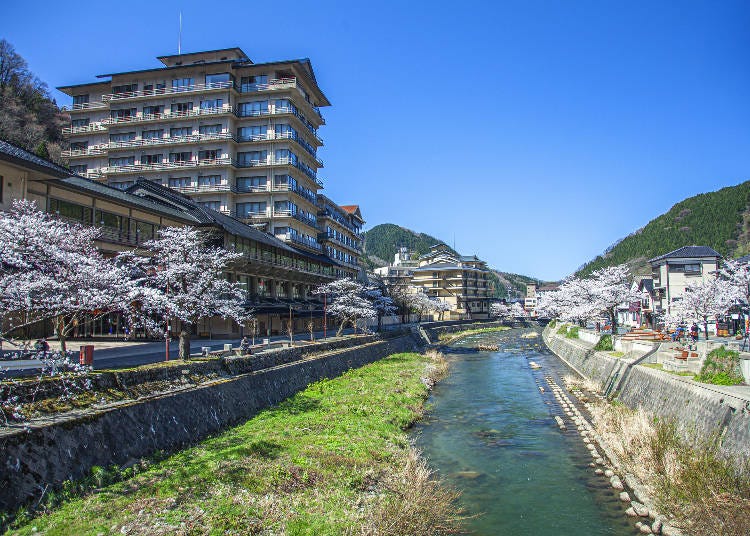
The only onsen town on this list in Yamagata’s Shonai (coastal) region, Atsumi Onsen town is located on the scenic Atsumi River, where it ends its journey to the shining Sea of Japan. The name “Atsumi” originally comes from the characters “温海”, meaning “warm ocean”, as the hot onsen waters flowed through the Atsumi River to the ocean, warming the sea waters at the mouth of the river.
According to legend, a local woodcutter found a wounded crane bathing in the springs in the year 807 and discovered that the waters were natural hot springs. While many travelers stopped to bathe in the springs across the centuries, the area developed into an onsen resort town in the early 1600s after Sakai Tadakatsu, a powerful samurai and lord of the Shonai Domain, established the Hot Spring Office of Shonai. It is said that Atsumi was one of his favorite onsen towns and he visited quite frequently during his life in Shonai.
One of the highlights of Atsumi Onsen town is its namesake river. Although it is beautiful in every season, there are over 300 sakura trees planted along the bank, turning the town into a pink paradise during the spring. Garnering significantly fewer overseas visitors than other cherry blossom spots in Japan, this is the perfect place to avoid the intense crowds that plague urban areas every sakura season in Japan. We especially recommend soaking your tired feet in one of the free foot baths along the bank of the river while taking in the tranquil Shonai scenery.
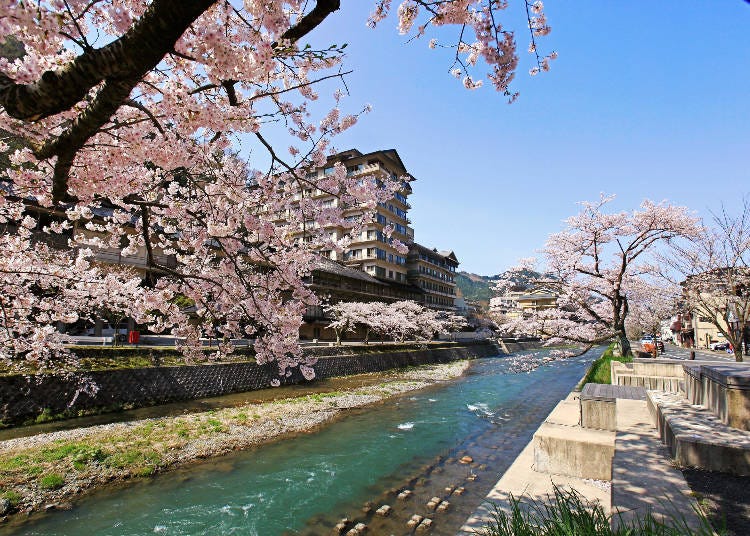
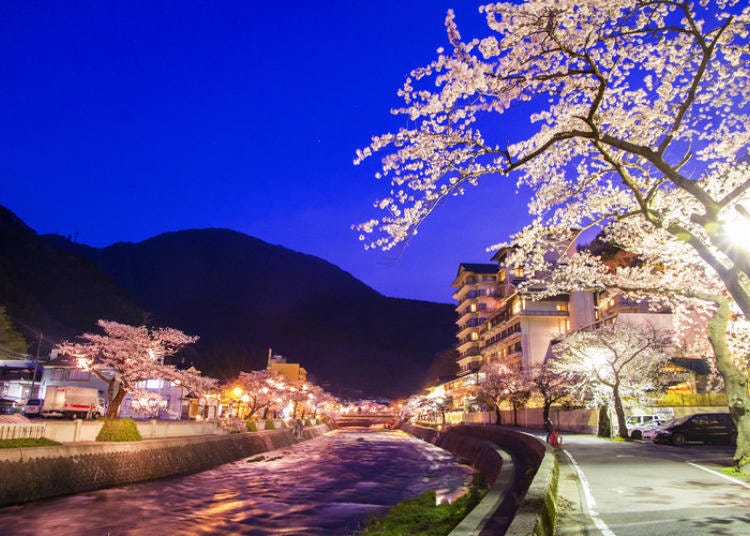
We recommend staying the night as any one of the inns is top-quality (and the fresh seafood served for breakfast and dinner is melt-in-your-mouth delicious).
How to Get to Atsumi Onsen Town
We recommend renting a car in Shonai as public transportation can be difficult - but not impossible - to navigate.
By air: Access to the Shonai region from Tokyo is quickest by air. ANA offers daily flights from Tokyo Haneda Airport to Shonai Airport (1 hour).
From Shonai Airport, Atsumi Onsen is a short 35-minute drive by rental car, or about 1.5 hours by public transportation. By public transportation, take the Shonai Kotsu bus bound for S-Mall Terminal from Shonai Airport to Tsuruoka Ekimae (in front of Tsuruoka Station) (26 minutes). From JR Tsuruoka Station, board the Uetsu Line (30 minutes) or Inaho Limited Express (18 minutes) to Atsumi Onsen Station. The train portion is covered by the JR East Tohoku Area Pass, the JR East Nagano Niigata Area Pass, and the Japan Rail Pass.
Atsumi Onsen town proper is a 30-minute walk from the station, so we recommend hailing a taxi or booking an inn with shuttle service to the station.
Public transportation From Tokyo, take the JR Joetsu Shinkansen “Toki” from JR Tokyo Station to JR Niigata Station (2 hours) and then a limited express train from Niigata to Tsuruoka Station. From Tsuruoka Station, board the Uetsu Line (30 minutes) or Inaho Limited Express (18 minutes) to Atsumi Onsen Station, and then plan to take a taxi (5 minutes) or walk (30 minutes) to Atsumi Onsen town proper. Trains on this route are covered by the JR East Tohoku Area Pass, the JR East Nagano Niigata Area Pass, and the Japan Rail Pass.
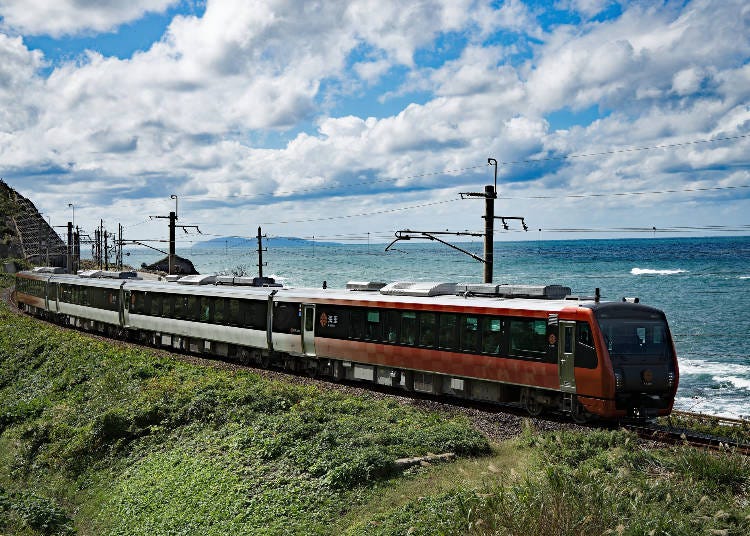
Public Onsen in Atsumi Onsen Town
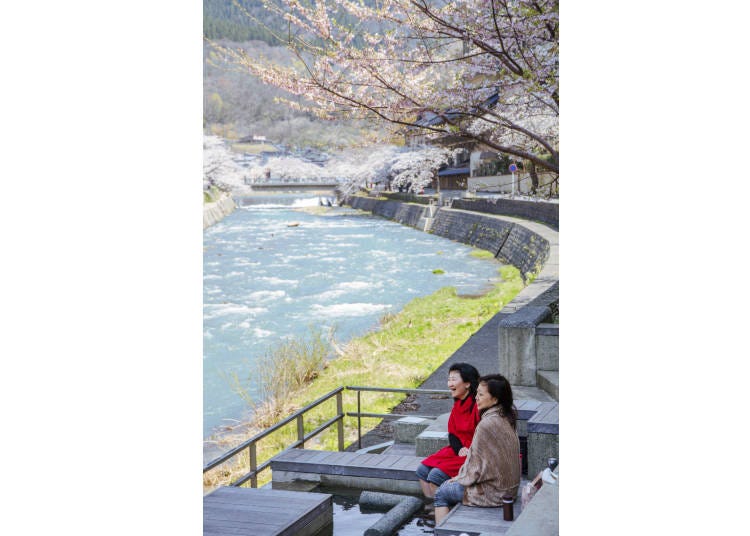
Mokke-yu Foot Bath (もっけ湯)
One of three free foot baths in Atsumi Onsen town, Mokke-yu is located on the picturesque bank of the Atsumi River. Enjoy views of sakura in the spring, kajika fish in the summer, and the salmon run in the autumn. Towels are not provided, so we recommend bringing your own.
-
Mokke-yuもっけ湯
- Address 290-8 Yuatsumi, Tsuruoka, Yamagata 999-7204
-
Nearest Station
Atsumi Onsen Station (33-minute walk/5 minutes by taxi)
- Phone Number 0235-43-4617
・Open: 24-hours
・Price: Free
・Closed: None
*For day-use onsen, we recommend Takamiya Bettei Kuon below.
Where to Stay in Atsumi Onsen Town
Takamiya Bettei Kuon (髙見屋別邸 久遠)
Modernese-style rooms. Indoor and outdoor baths available, as well as several guest rooms with attached private onsen and two private onsen available for a fee (1,650 yen/50 minutes).
*Onsen is open to day-use bathers from 3 PM to 8 PM (last entrance 7 PM) every day for a fee of 1000 yen. Towel rental is 200 yen for a bath towel and 100 yen for a face towel.
-

-
Address
Yuatsumi Yunoshiri 83-3, Tsuruoka, Yamagata, 999-7204
View Map -
Nearest Station
Atsumionsen Station (Uetsu Line)
23 minutes on foot
Vacancy search, reservation
-
from 27,360JPY 1room, 2adults
Check with our partner site as the latest rates, rate details, and guest room requirements may vary.
-
Address
Yuatsumi Yunoshiri 83-3, Tsuruoka, Yamagata, 999-7204
Tachibanaya (あつみ温泉 たちばなや)
Standard to luxurious Japanese-style and Western-style rooms, with its very own koi pond on property. Indoor and outdoor baths available, as well as two private outdoor baths available for a fee (3,300 yen/50 minutes). Several of the guestrooms feature attached private baths as well.
-
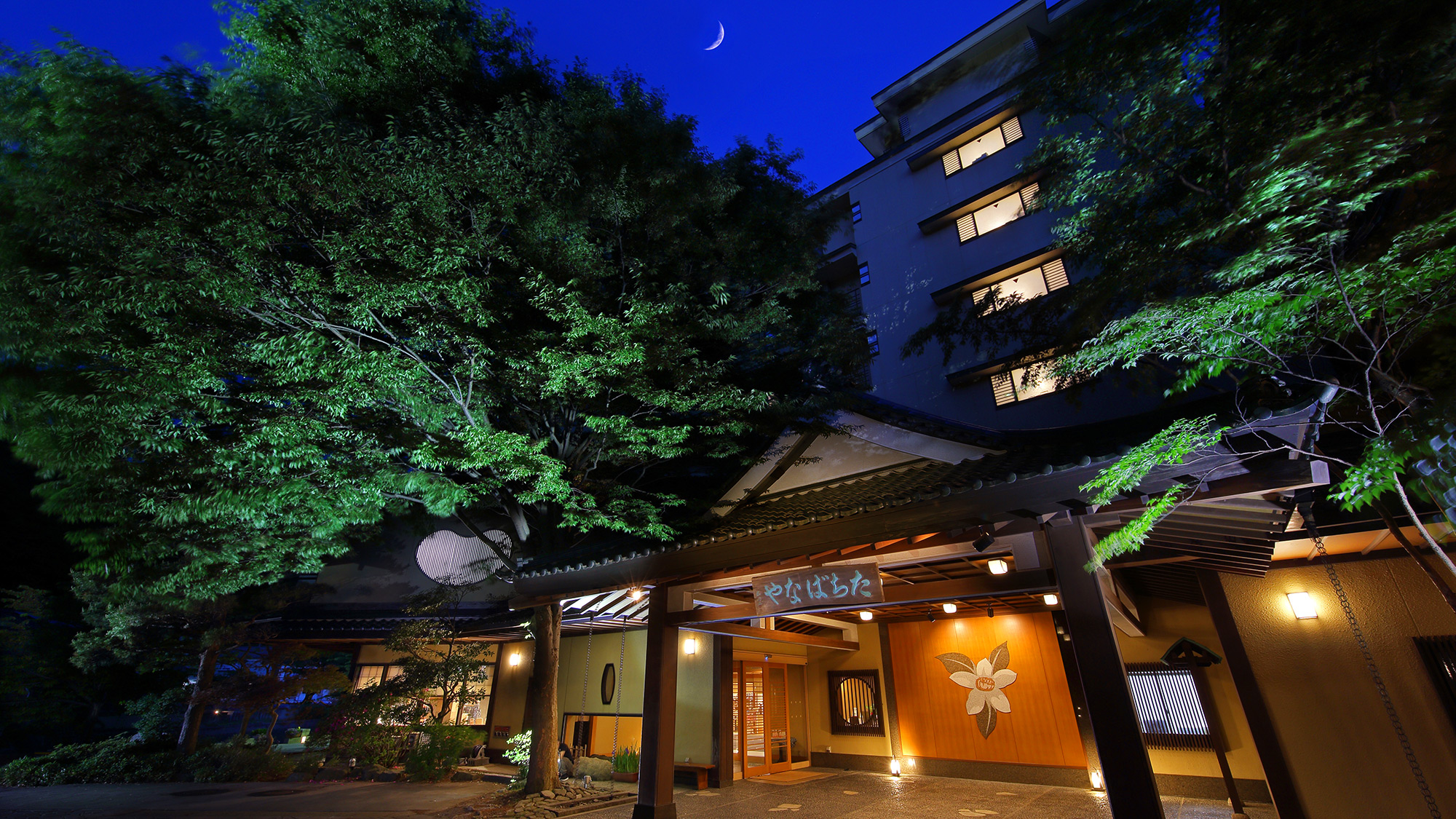
-
Address
3 Yuatsumi, Tsuruoka-shi, Yamagata, 999-7204
View Map -
Nearest Station
Atsumionsen Station (Uetsu Line)
Vacancy search, reservation
-
from 30,800JPY 1room, 2adults
Check with our partner site as the latest rates, rate details, and guest room requirements may vary.
-
Address
3 Yuatsumi, Tsuruoka-shi, Yamagata, 999-7204
Bankokuya (萬国屋)
Stylish Japanese-style rooms with a modern touch. Indoor and outdoor onsen available, as well as several guest rooms with attached private indoor or outdoor baths.
-
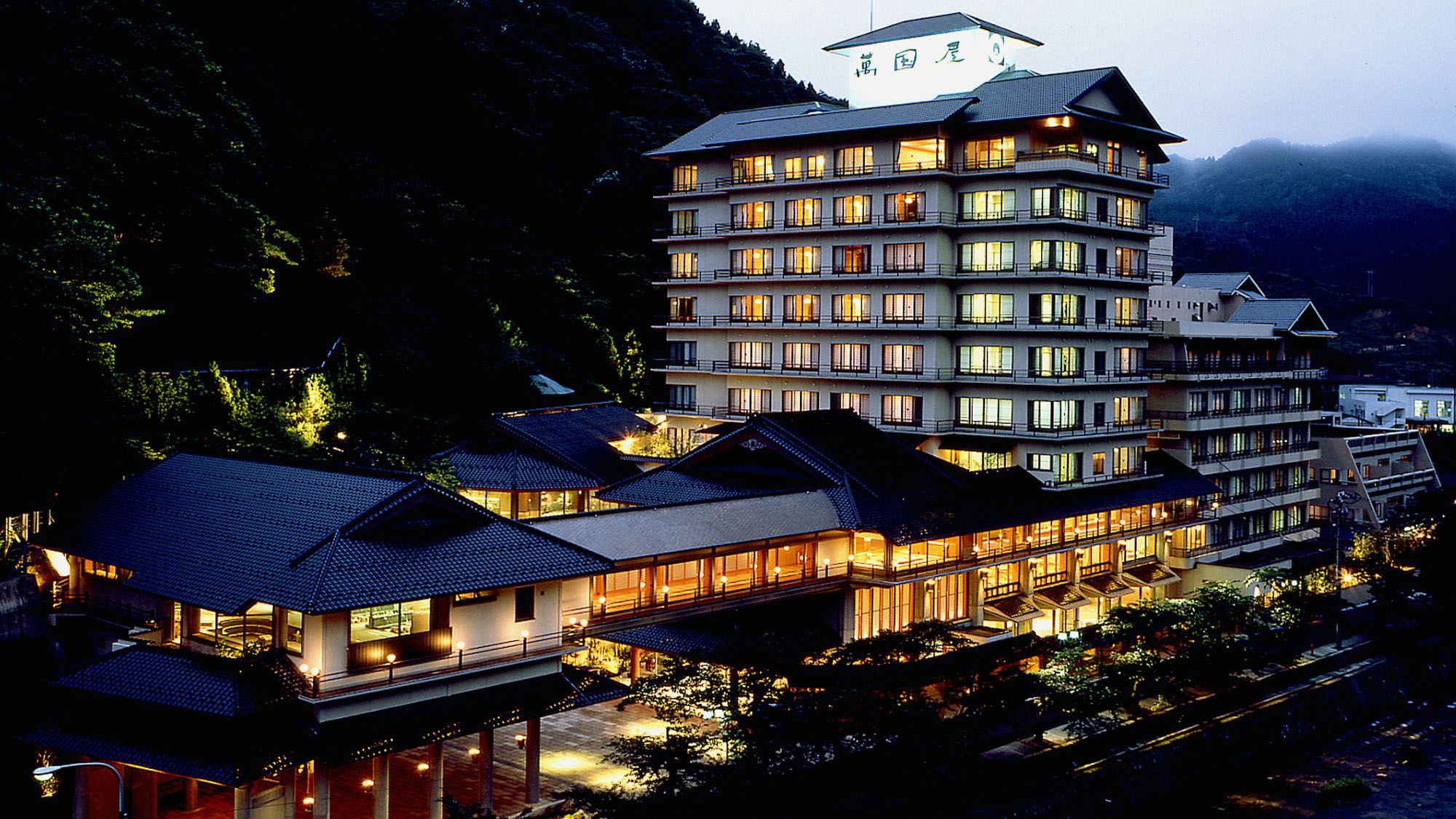
-
Address
1 Yuatsumi, Tsuruoka-shi, Yamagata, 999-7204
View Map -
Nearest Station
Atsumionsen Station (Uetsu Line)
Vacancy search, reservation
-
from 39,600JPY 1room, 2adults
Check with our partner site as the latest rates, rate details, and guest room requirements may vary.
-
Address
1 Yuatsumi, Tsuruoka-shi, Yamagata, 999-7204
Are Yamagata’s Onsen Towns Worth It?
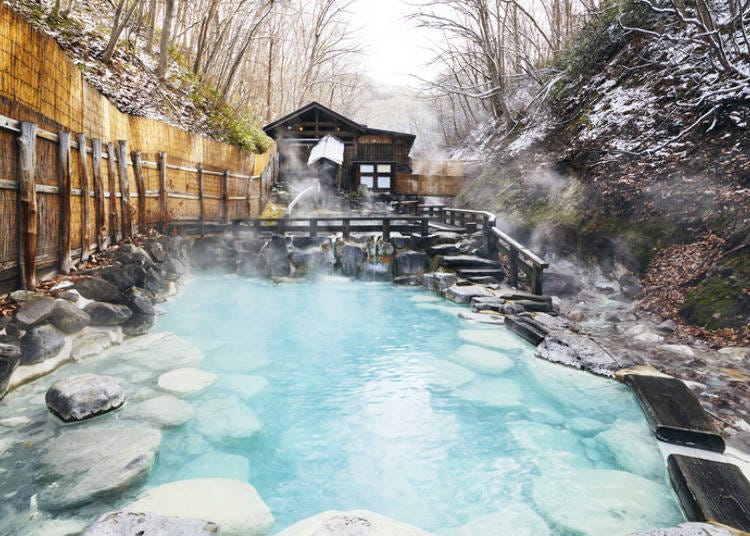
If this article hasn’t already solidified Yamagata in your itinerary, then YES! Not yet swarming with hordes of overseas tourists, Yamagata is often considered an off-the-beaten-path destination - but that just means that there is so much waiting to be explored. From serene mountain retreats to historic samurai towns to quiet coastal getaways, Yamagata has it all! With so many fantastic onsen towns to choose from, we hope that these 5 locally-chosen onsen towns have helped you narrow down your selection and cemented Yamagata as a must-visit in your future trips to Japan.
Written by: Sarah Dean
*Prices and options mentioned are subject to change.
*Unless stated otherwise, all prices include tax.
Limited time offer: 10% discount coupons available now!
Recommended places for you
-
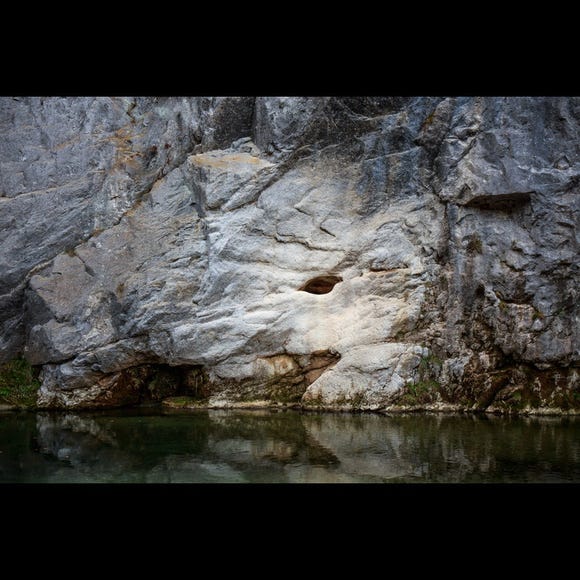
Geibi Gorge
Rivers, Lakes & Canyons
Morioka, Hiraizumi And Hachimantai
-
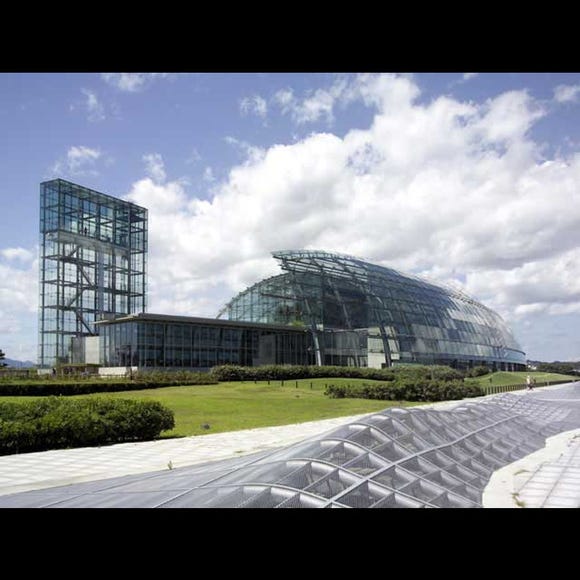
Aquamarine Fukushima
Zoos, Aquariums & Botanical Gardens
Fukushima, Koriyama And Iwaki
-
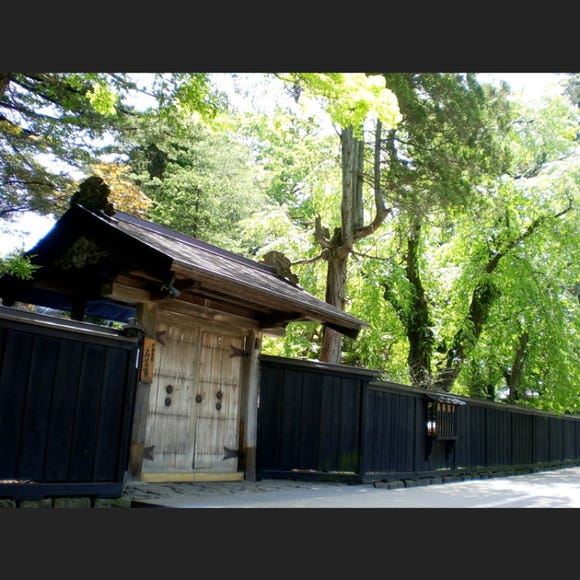
Ishiguro Samurai House
Historical Places
Surrounding Areas Of Akita
-
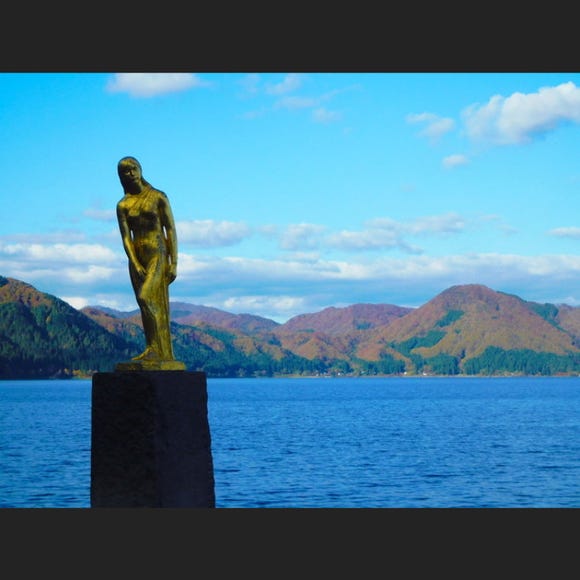
Lake Tazawa
Rivers, Lakes & Canyons
Surrounding Areas Of Akita
-
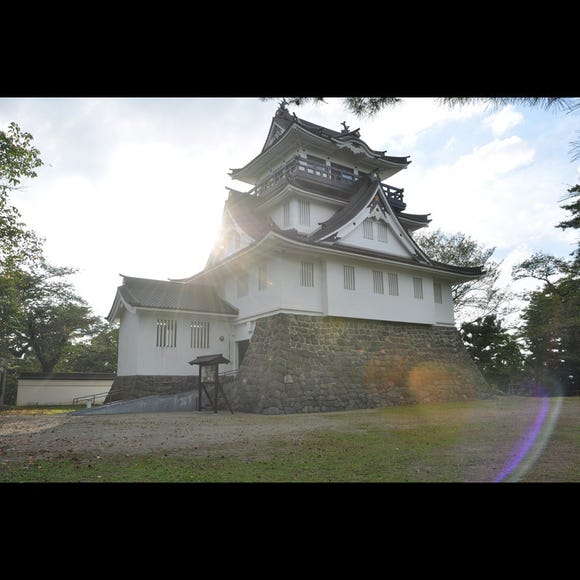
Yokote Park
Parks
Surrounding Areas Of Akita
-
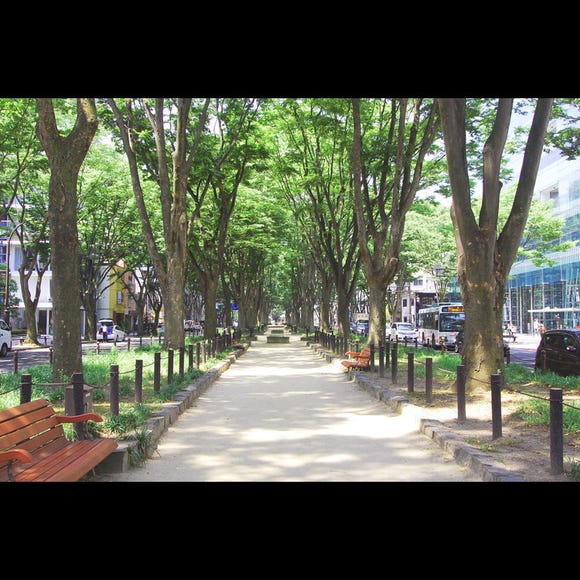
Jozenji Street
Other Townscapes
Sendai And Matsushima
-
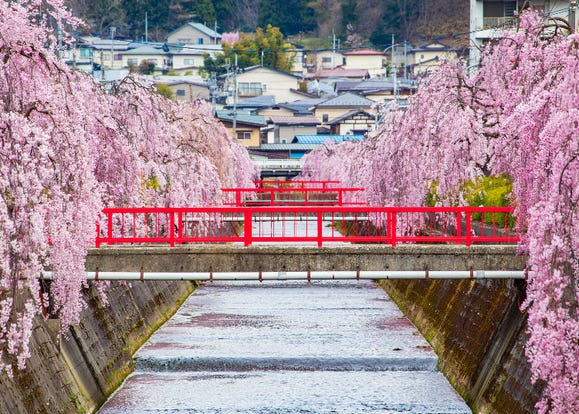
10 Breathtaking Places in Yamagata to See the Cherry Blossoms
-
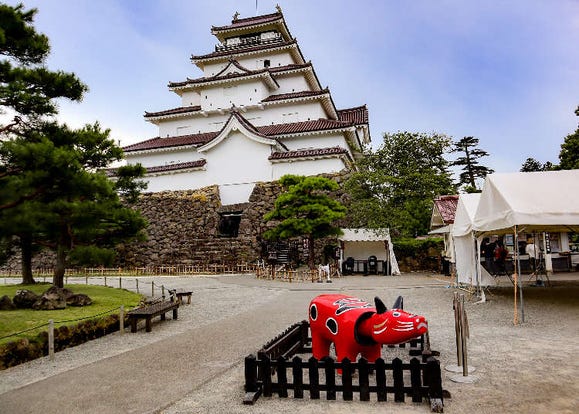
Aizu-Wakamatsu Guide (Fukushima): A Day in the City of Sake and Samurai
-
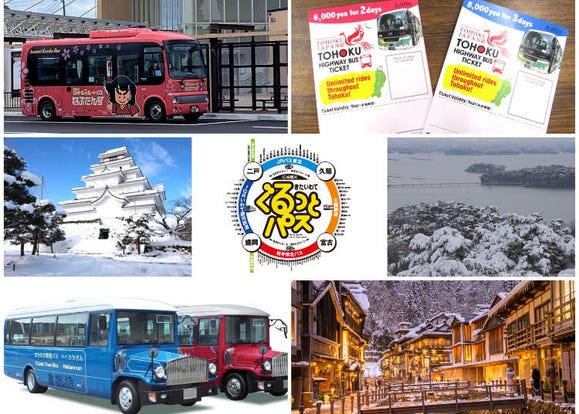
Explore Tohoku in Winter With 5 Budget-Friendly Travel Passes (Local Recommended!)
-
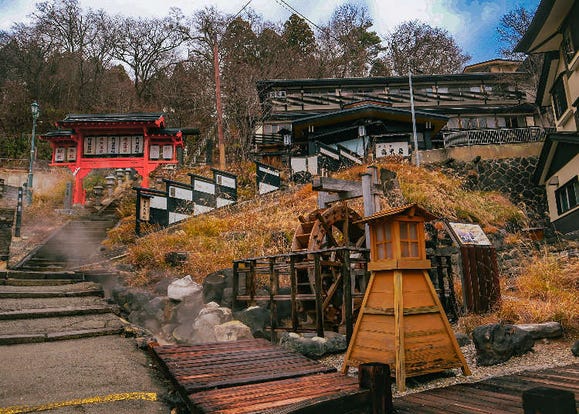
Plan Your Visit to Zao Onsen (Yamagata) - A Comprehensive Guide
-
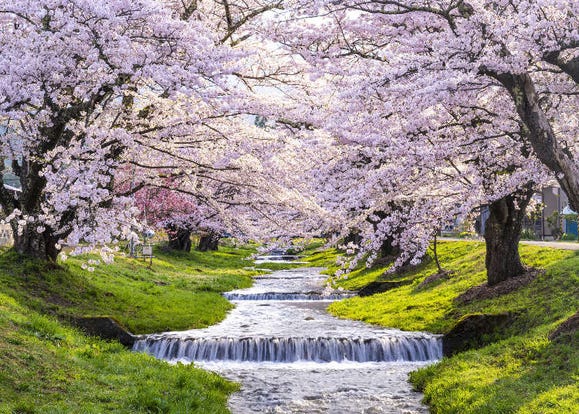
10 Dreamy Places in Fukushima to See the Cherry Blossoms
-
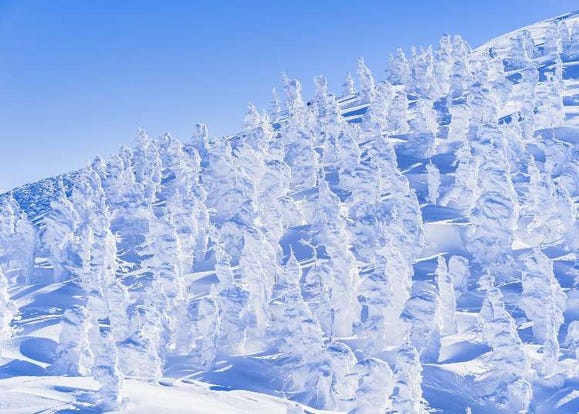
The Snow Monsters of Zao: Journey Among Yamagata’s Winter Wonders
-
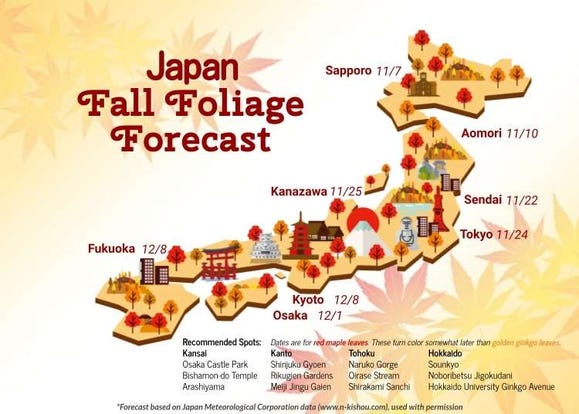
Autumn in Japan 2024: Fall Foliage Forecast & Where to Enjoy the Colorful Leaves (+Tour Info)
-
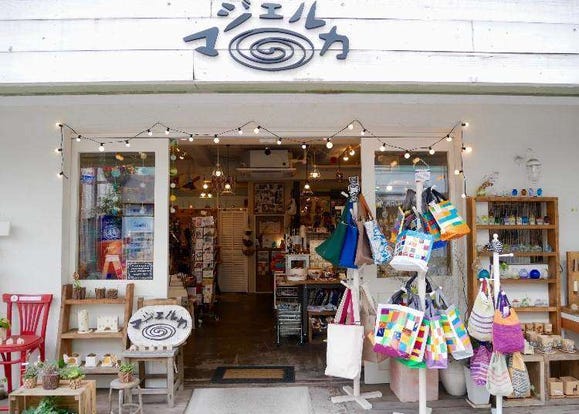
Kichijoji – Explore Tokyo’s Top-Rated Stylish Suburb in Half a Day!
-

5 Unique Tohoku Onsen Hot Springs That Surprised Foreign Visitors
-
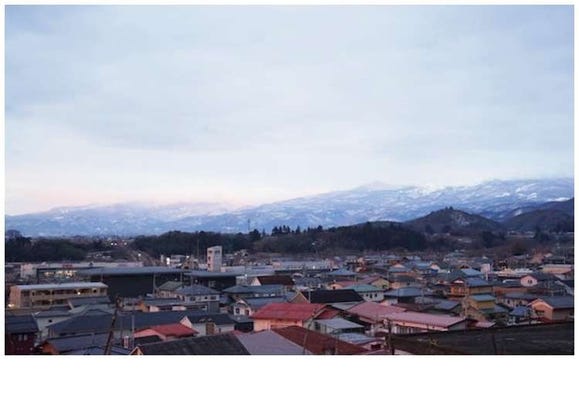
Iizaka Onsen Guide: Japan's Gorgeous Hidden Hot Springs Town! (Access, Things to Do, Ryokan)
-
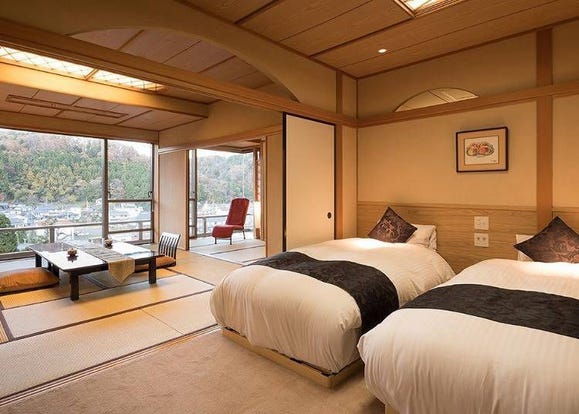
Top 5 Akiu Onsen Ryokan: A Must When Traveling to Japan's Northeast
-
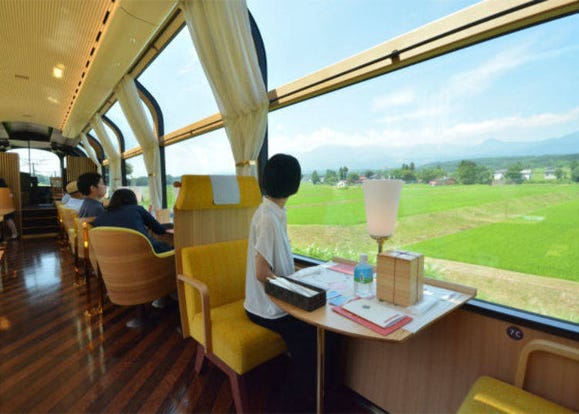
We Board Japan's 'Setsugekka' Resort Train And Have An Incredible Journey Through The Heartland













